Saving Face
Why the NCAA is the only high-end amateur hockey league that requires full facial protection and what players think about the rule.
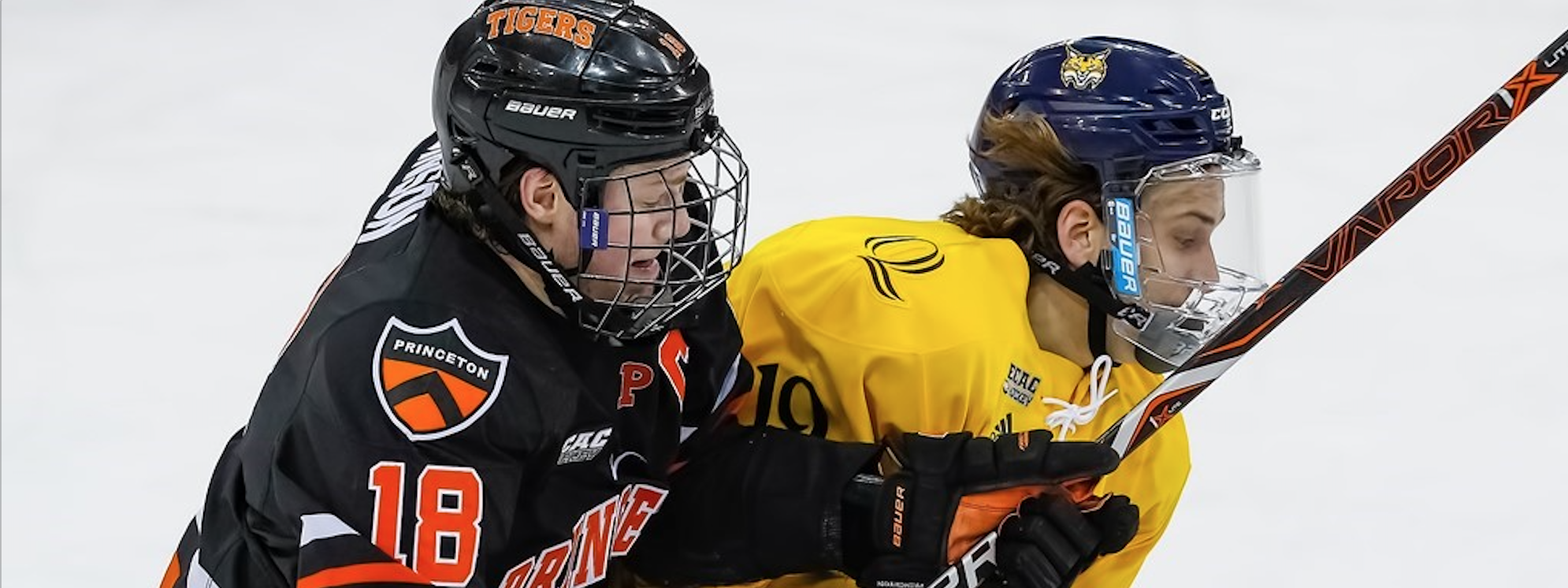
Chase Priskie exercised his patience and waited for his name to be called at the 2016 NHL Entry Draft.
After going undrafted in his first two years of eligibility, Priskie, a college hockey defenseman from Pembroke Pines, Florida, felt his nerves settle in the sixth-round of the draft when he was selected by the Washington Capitals.
A freshman at the time, Priskie watched his name pop up on the draft board from his home in Hamden, Connecticut and with his Quinnipiac teammates by his side. Suddenly, he had to make quick and drastic changes to his summer plans.
His life in Hamden was put on pause. For the first time in his young hockey career, Priskie was set to make a handful of adjustments as he headed to an NHL rookie camp.
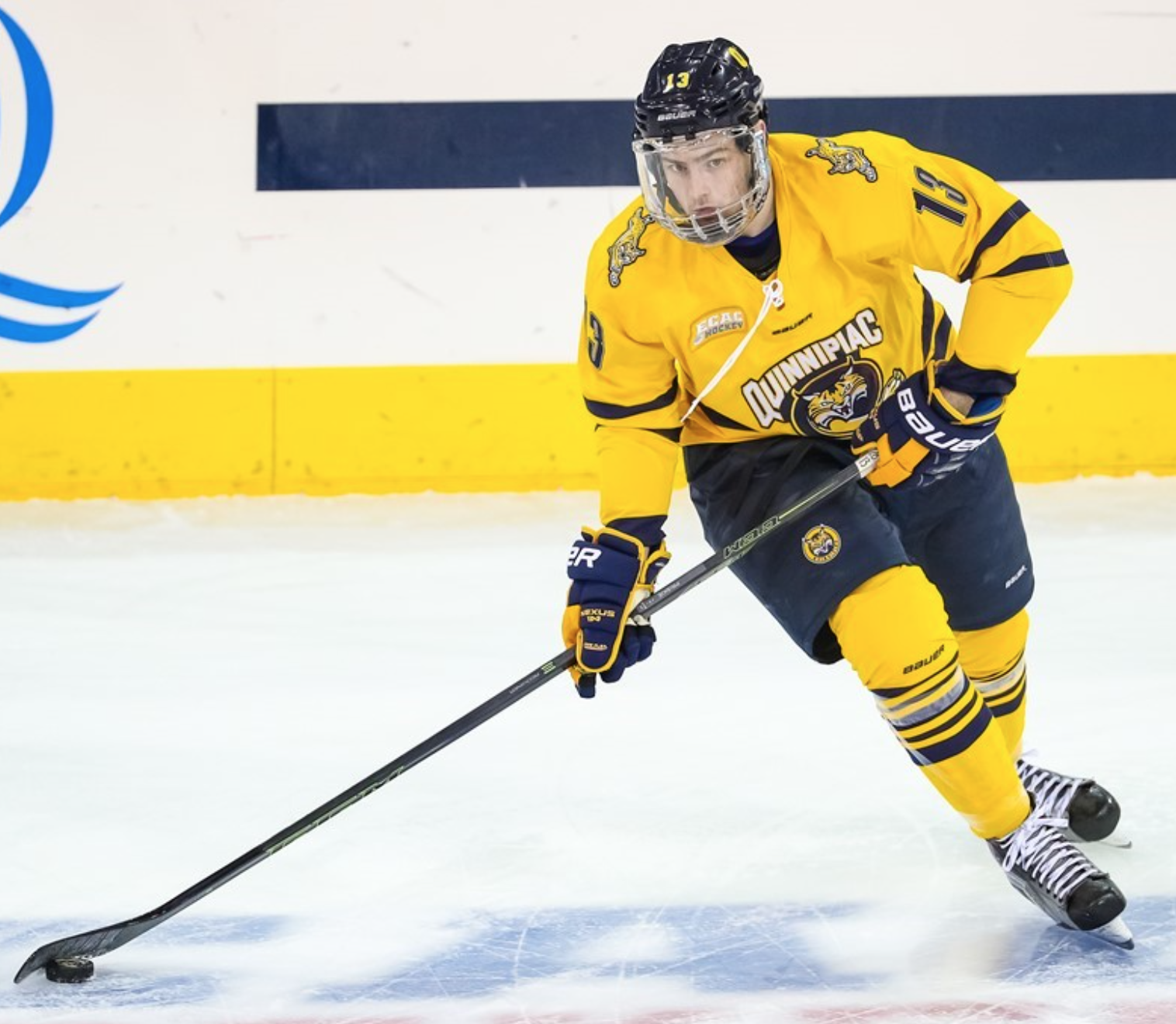
Photo / Rob Rasmussen
Rob Rasmussen

Photo / Rob Rasmussen
Rob Rasmussen
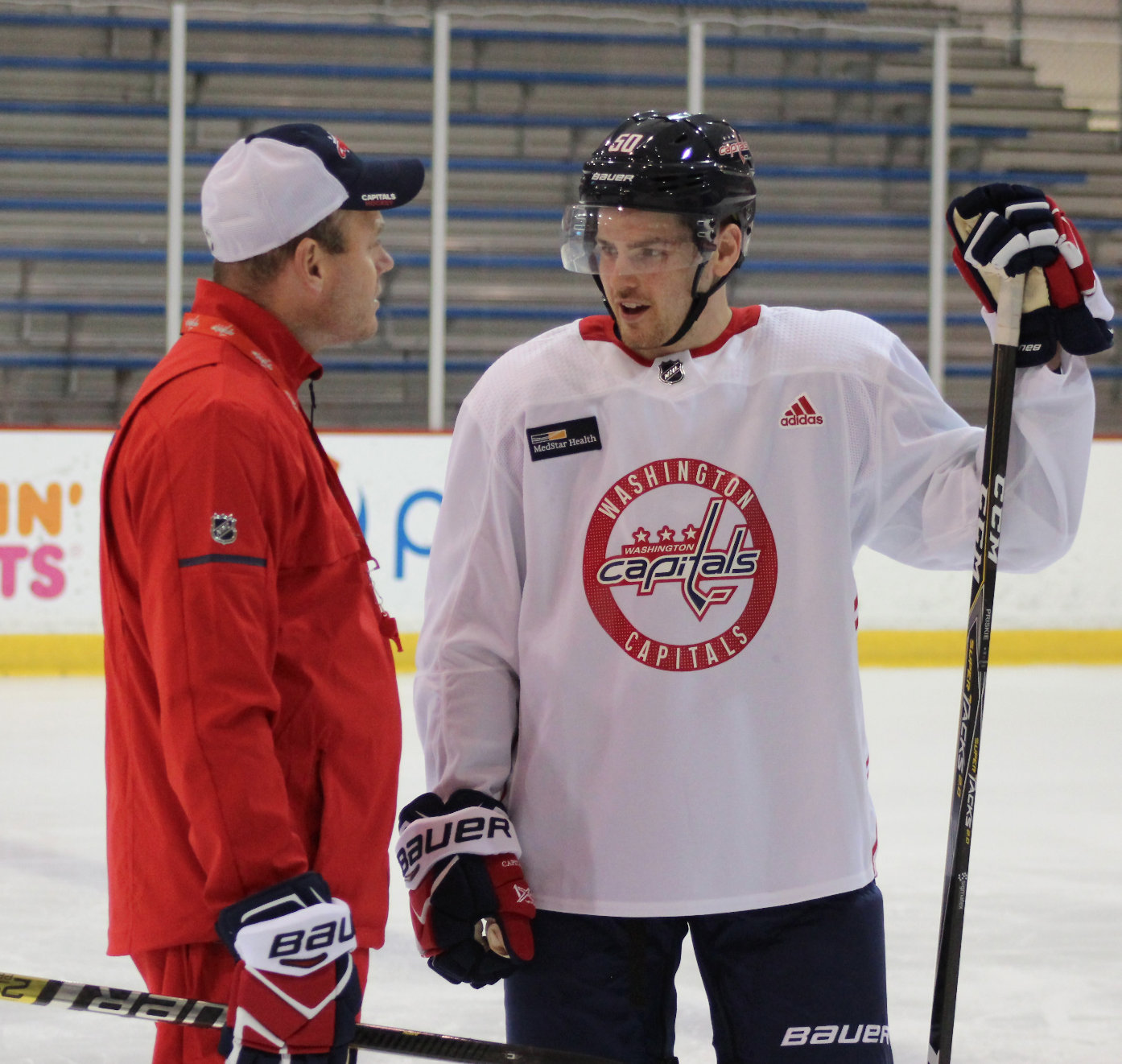
Photo / Scott Putski
Scott Putski
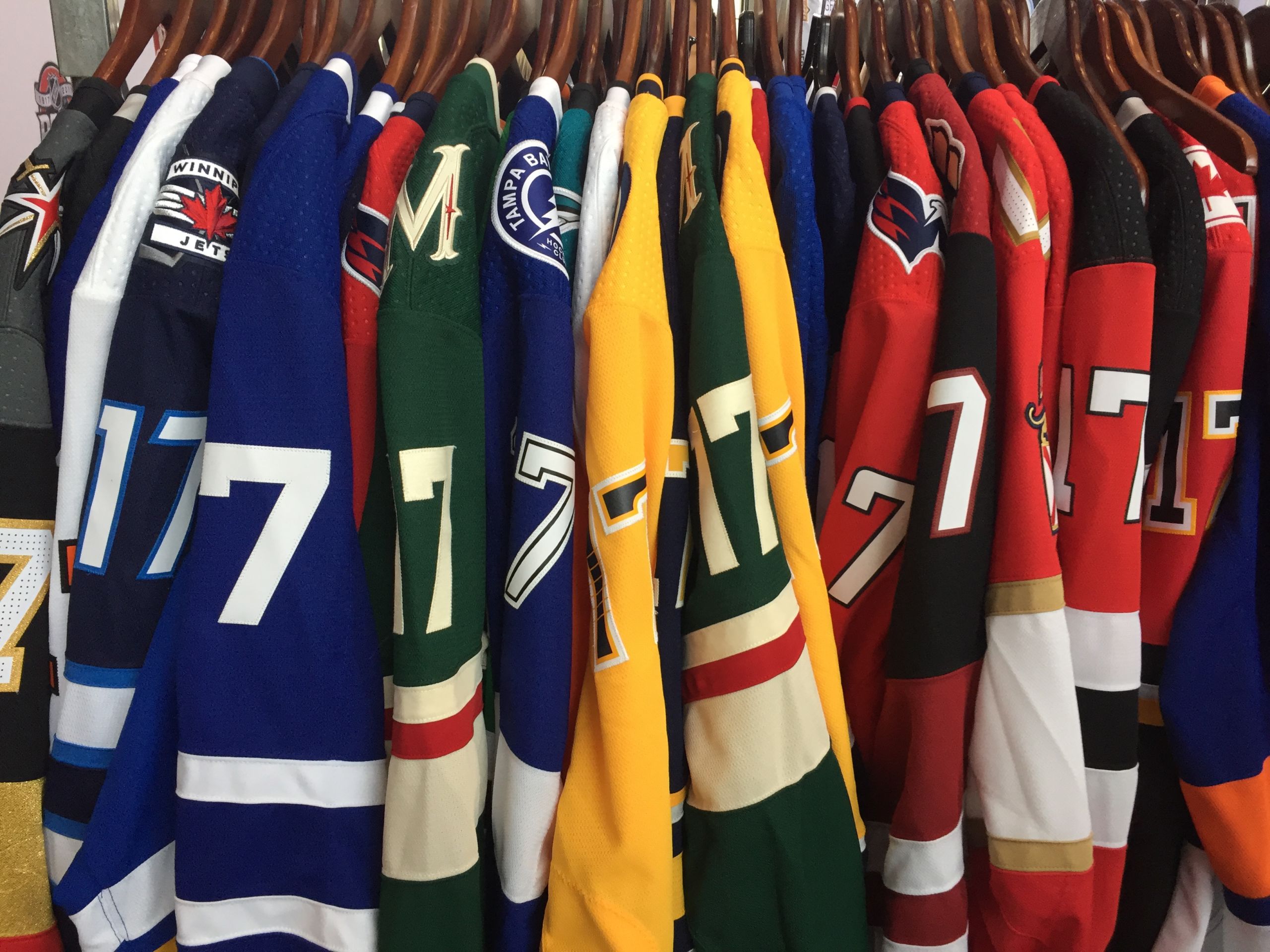
There is no single road to the NHL. Rather, it’s a league that serves as the final destination to many paths.
Of those separate paths, 50 percent of players drafted come from the Canadian major juniors route, 20 percent are international picks and just 10.9 percent are drafted out of college, while the remaining 19.1 percent is made up of American junior hockey, high school hockey and "other" players, according to NHL Entry Draft historical data.
But whether from major juniors, the collegiate level or playing overseas, transitional commonalities between any of the high-end leagues to the North American professional game include many fine details.
On the ice, the speed of the game is quicker, the players are both bigger and stronger, and the hockey minds think better. Off the ice, there is a standard for keeping in shape. The dated days of carb-loading have been replaced with intense workouts, controlled dieting and specific recovery plans.
But one detail remains specific to college hockey players. The full shield helmets student-athletes wear are different from every other high-end amateur hockey league.
Priskie, and the rest of college hockey players that attend NHL camps, may blend in with the rest of the prospects at first glance, but a more discrete transition entails trading in their NCAA-mandated full cage for sleeker, more professional-esque half shields.
A seemingly minute detail, yes. But that subtle difference carries much more than what initially meets the eye and enough to make a difference.
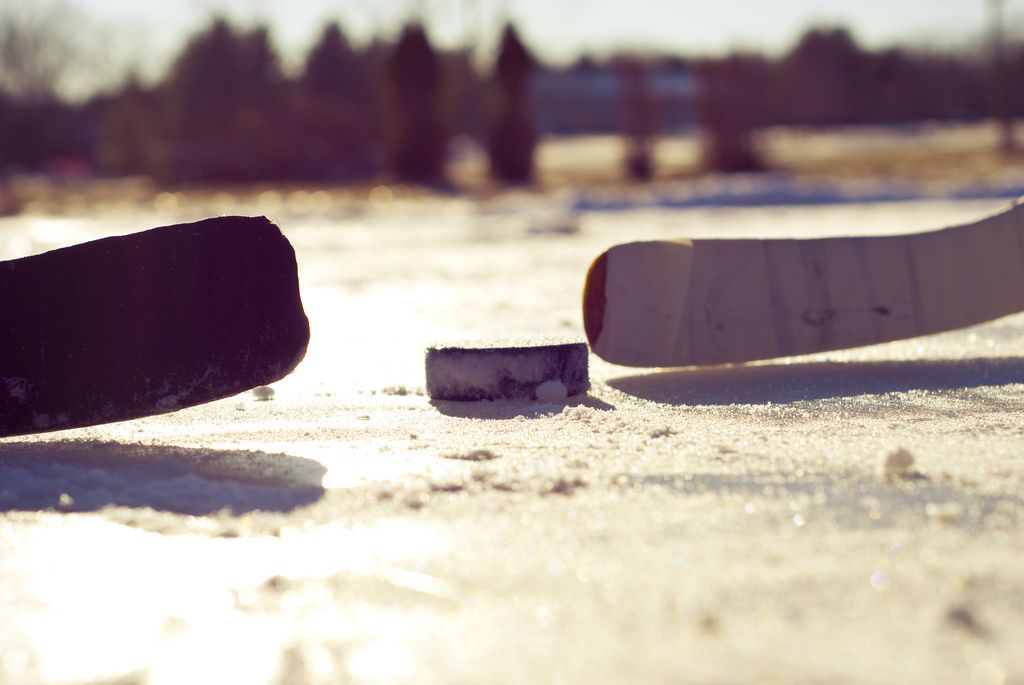
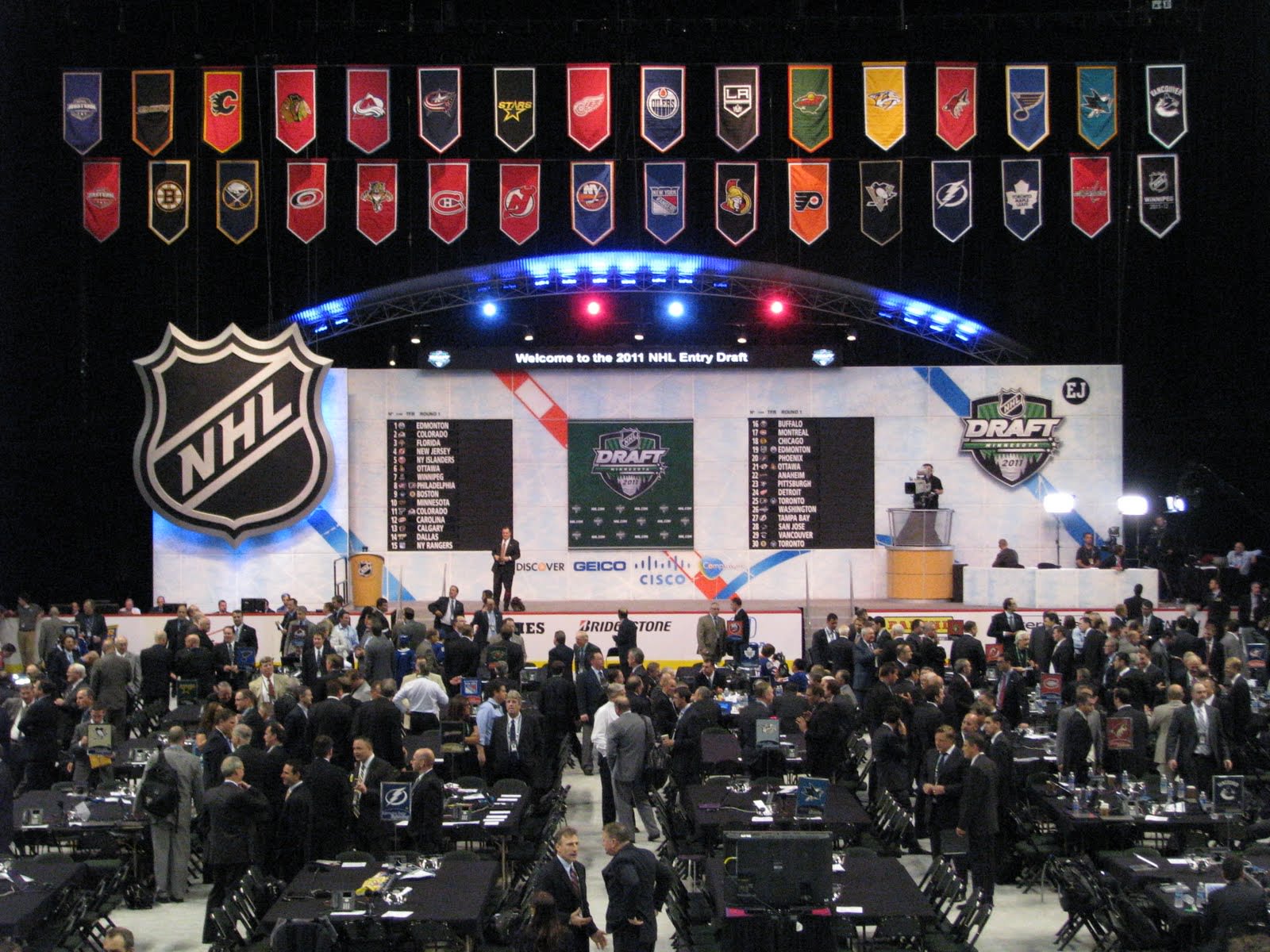

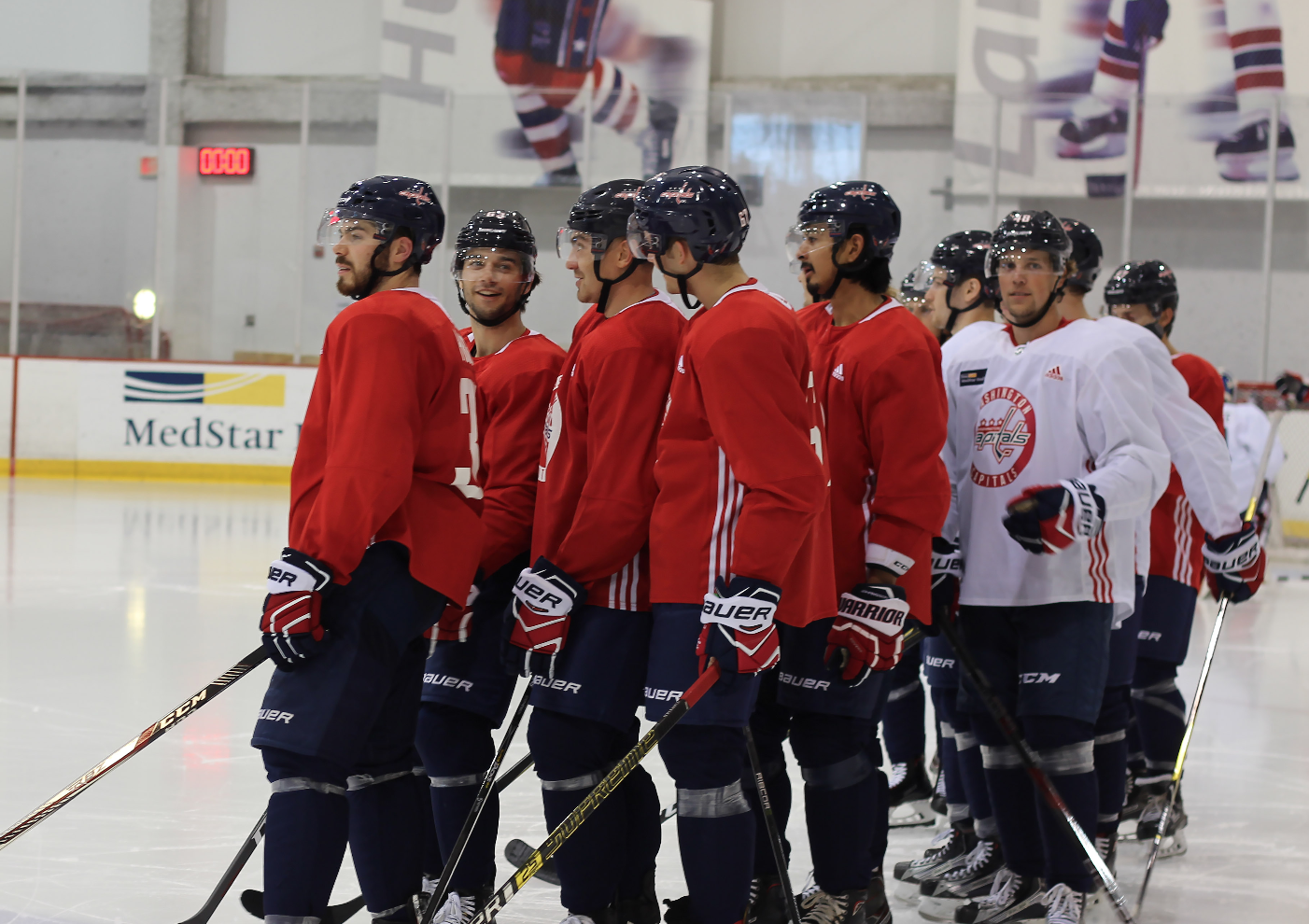
While college hockey teams have been intact since 1896, the NCAA had no involvement until the 1947-48 season, despite the organization’s inaugural year of 1910.
In college hockey’s earliest days, players — like the pros — did not wear helmets. However, that all changed when leather helmets with no facial shields were introduced as the game’s first form of head protection in the late 1950s.
As technology progressed, the leather was switched out for plastic, but players remained without facial protection for another 20-plus years.
It wasn’t until 1978 that full cages were mandated throughout the NCAA.
While other injuries were prevalent before the rule change, including facial lacerations and concussions, full cages were primarily implemented in order to protect the eyes of players, according to the NCAA.
Since then, teams have worn full face shields in the form of full metal cages and full, clear shields, also known as bubbles.
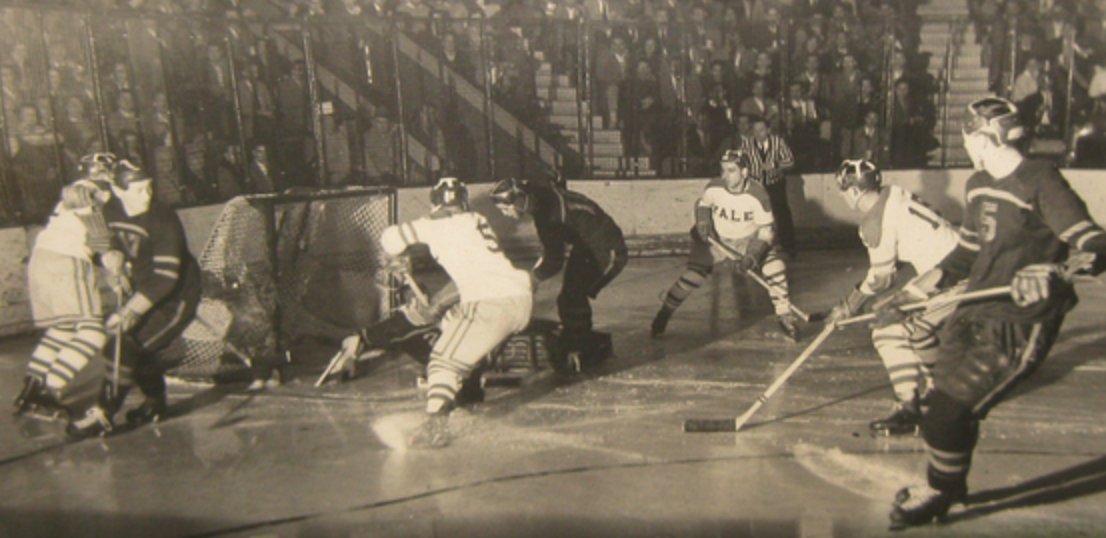
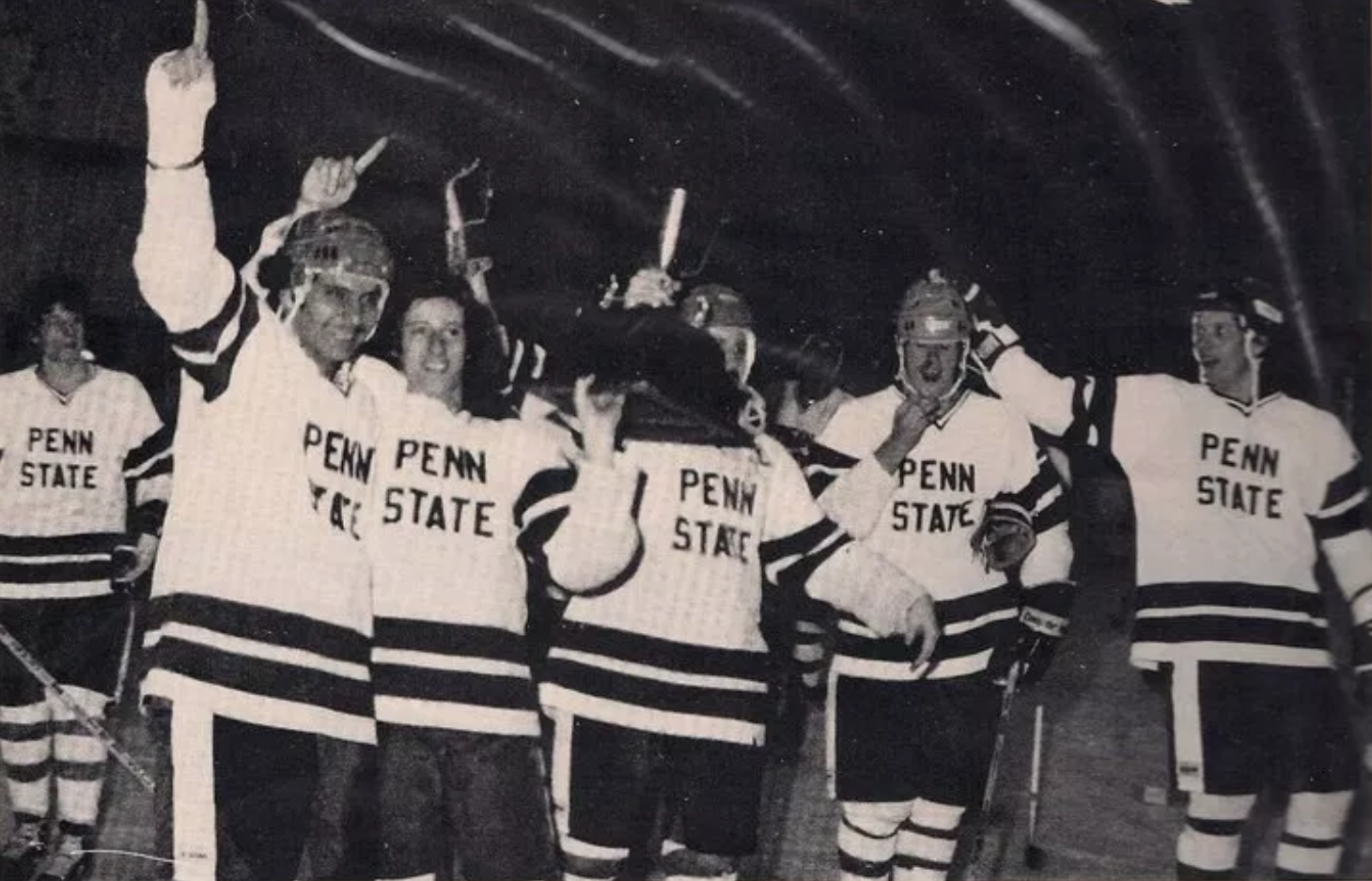
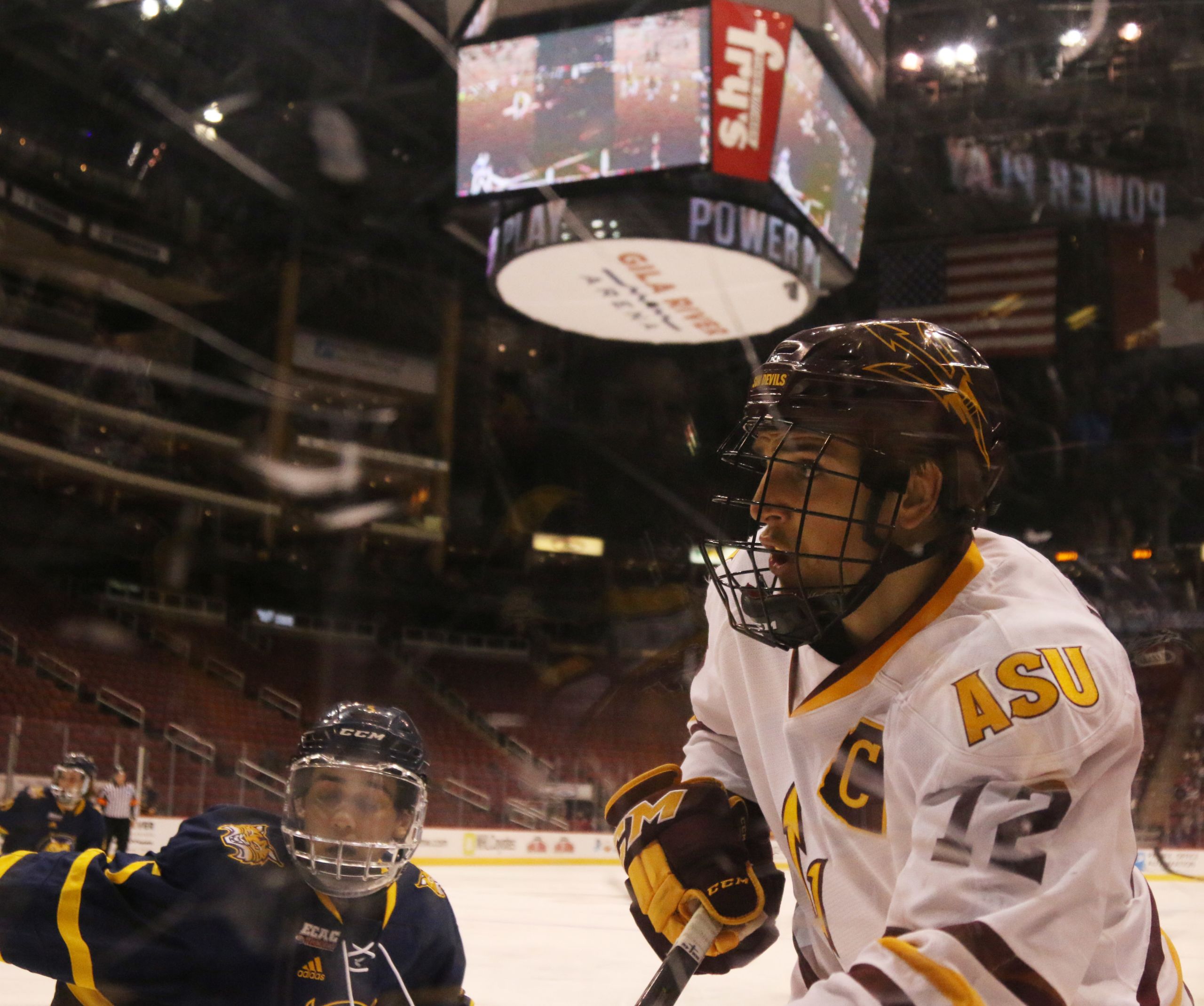
Since his first Capitals Development Camp in Arlington, Virginia, Priskie has been back twice more, each in the summer following a full season of college hockey.
Now a senior captain for the Quinnipiac Bobcats, Priskie's skill set has progressed with each year at school. But the one thing that hasn’t changed since his freshman year is the NCAA-mandated full shield.
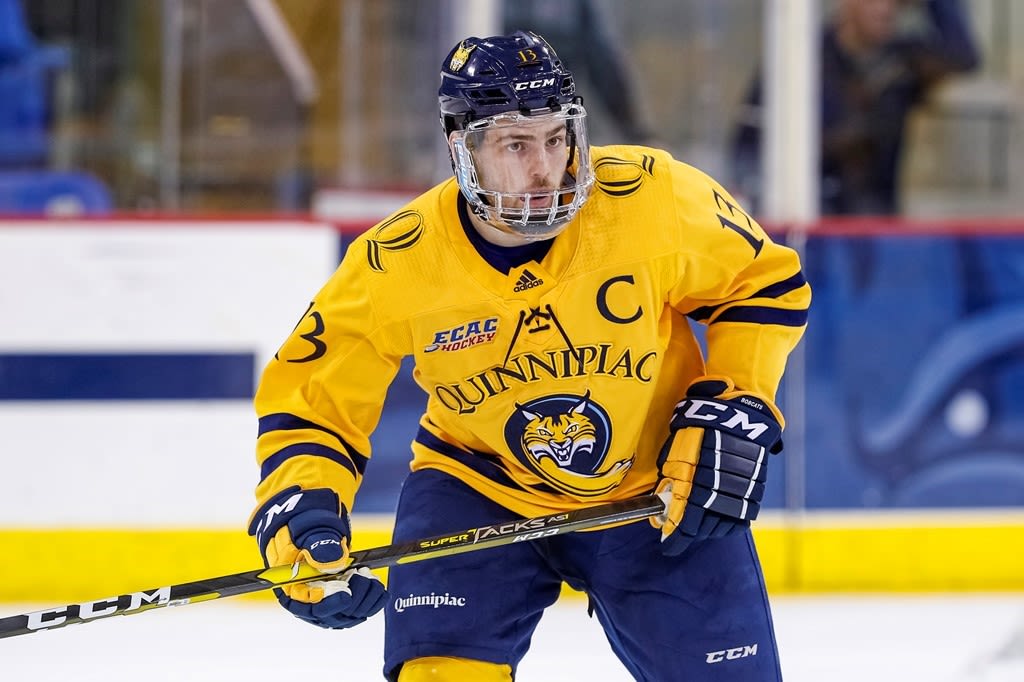
Photo / Rob Rasmussen
Photo / Rob Rasmussen
While the distinction between full and half shields remain fine, Priskie noted that his personal adaptation before NHL summer camps are typically a process.
“It’s a tough transition wearing a [full shield] all year and then having to go to a visor in the summer because it’s a different game wearing the visor,” Priskie said. “Once our season ends I kind of throw the visor on to get in the groove of wearing it and playing that kind of game.”
Whether it be through the restricted ability to communicate, relatively limited peripheral vision or simply drinking water, wearing the full face shield is something that bothers many players that have made the transition from college to the pros.
First impressions at the professional level are important and Philadelphia Flyers defenseman, and UMass Lowell alum, Christian Folin is one former student-athlete that has expressed the adjustment that he had to make when going pro.
At one point, he was even forced to switch back and forth between wearing a shield and a full cage every two seasons, based on the different leagues he was playing in.
“I wore a visor before when I was playing in Sweden… then I played (American) juniors and had a visor for another two years. Then I went to college and put a cage on, so that was a tough adjustment going back to it actually,” Folin said. “It kind of blurred your vision a little bit, but when you get used to it, it’s not in your way.”
While the full face mask becomes more routine after some time, there are more consistent impediments that factor into hindering a player’s game as well.
New York Islanders first-round pick Kieffer Bellows — who played both college hockey with Boston University as well as major juniors with the WHL's Portland Winterhawks — is a proponent for the half shield as well.
“I was excited every single time I got to wear a visor because I honestly think you see better out of them,” Bellows said. “I think you see the ice better, it’s better for breathing and communication as well. I think the game is all about communication and talking on the ice now, so I think if you’re wearing a cage or a bubble, it can restrict your talking a bit and it’s a big reason why wearing a visor helps.”
On the flip side, some other former college hockey players acknowledge that while it can be an annoyance, it is simply understood that wearing the full cage is just part of the path any player chooses to take.
"Honestly, that’s not too big of an adjustment," current Philadelphia Flyers forward and former North Dakota University All-American Corban Knight said. "I think with the cage, maybe a practice or two — and you use it all throughout growing up, so it’s not like something you have to really get used to. And then going back to a visor in pro is nice."
But even Knight made it clear that the overarching lack of full on-ice visibility remains a factor in adjusting to the different facial protection.
"You just have a little bit better vision, but I don’t think it’s a very big difference at all,” he added.
John Stevens, current forward for the New York Islanders' AHL affiliate Bridgeport Sound Tigers and former captain at Northeastern University, also feels that the adjustment is a relatively simple one despite the added nuances of the full shield.
“I think the transition is pretty easy," Stevens said. "A lot of us had played junior too before and we got to college, so we had worn a visor there and to have to go back to a cage."
"I guess it’s cool in the fact that it’s a tradition of college, but it’s a little nicer to have a visor and not have to breathe through a cage or bubble.”
While the topic of whether or not the full face shields should be barred from college hockey remains up for debate, the skaters know what they are getting themselves into as student-athletes.
But it's not as if the NCAA mandates the rule without reason. There is calculated cause as to why the rule stands.
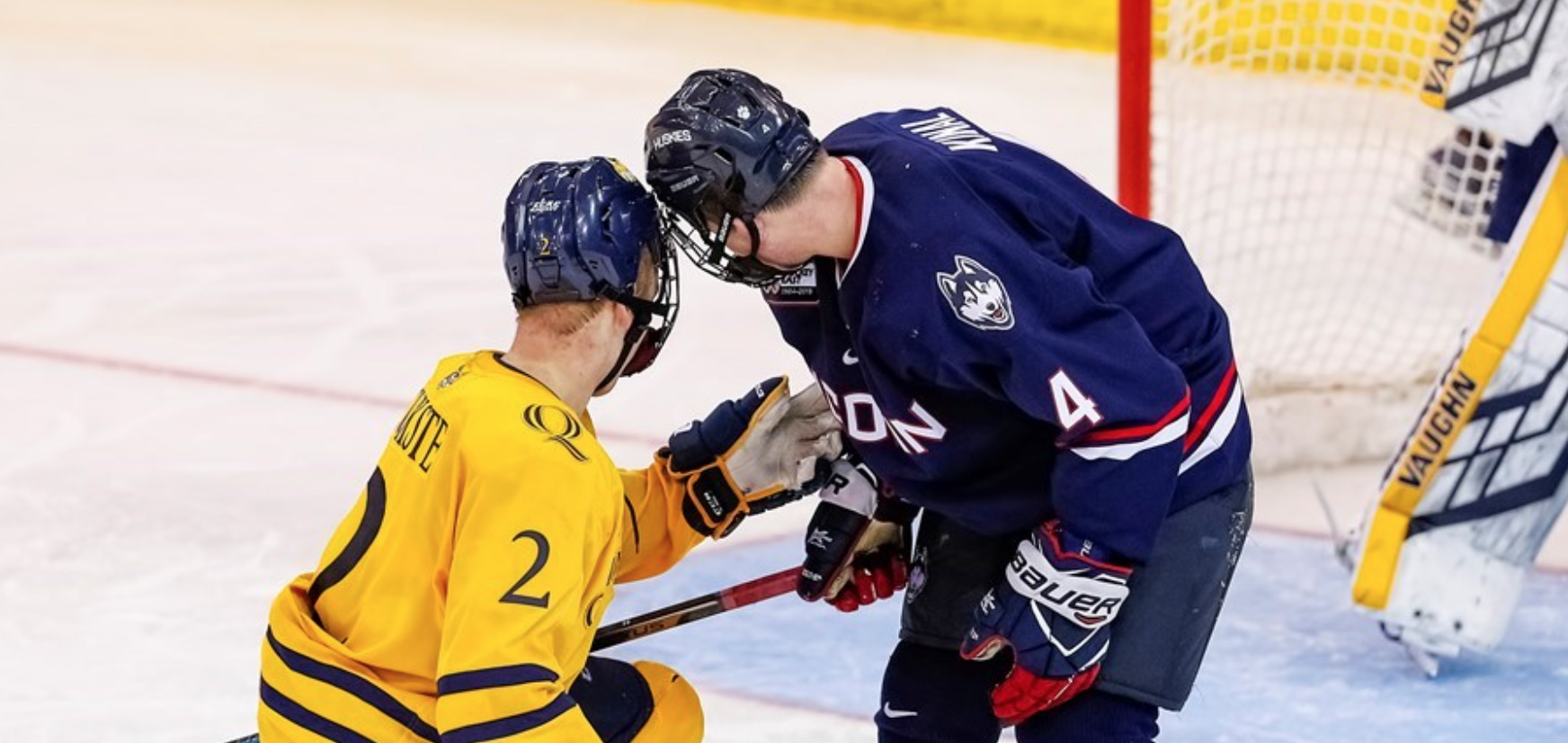
Dr. Michael Stuart, the chief medical officer of USA Hockey and a professor at the Mayo Clinic in Rochester, Minnesota, has been a part of the premiere research on facial protection over the last two decades. He is also a member of the International Ice Hockey Federation (IIHF) medical committee and a hockey dad as well.
His three sons, Mark, Colin and Mike, all played hockey at both the collegiate and professional levels.
While Mark (pictured right), a recently retired defenseman that played 673 NHL games over his 13-year pro career, did not wear any form of facial protection at the professional level, his father explains why the different levels of protection are required at separate levels of play through one of his studies in the American Medical Journal, A comparison of facial protection and the incidence of head, neck, and facial injuries in Junior A hockey players. A function of individual playing time.
“Full protection is better than partial protection and partial protection is better than no protection,” Dr. Stuart said. “In fact, there was an almost-five times higher risk of eye injury to players without a face mask to a visor and there is no risk of eye injury to players wearing full facial protection, so if you look at injury risk to the eyes, hockey — despite pucks and elbows and sticks — is one of the safest sports on the planet, provided you wear full facial protection.”
That being said, injuries in hockey remain commonplace due to the sport’s aggressive nature.
While external injuries, like eye injuries, facial lacerations and broken bones in the face, are nearly 100 percent preventable with the full face mask on, visceral injuries are not.
Bill Riga, a member of the NCAA Men’s and Women’s Ice Hockey Rules Committee and an associate head coach at Quinnipiac University, was a former player himself. From his college days at UMass Lowell to a brief professional stint in the Western Professional Hockey League, he recognizes -- from both a player's perspective and an executive standpoint -- that foul play is part of the game no matter what type of facial protection is being used at any level.
“I did play games without a face mask and I did get hit in the face, and I got a huge black eye for not wearing a face mask,” Riga said. “I also got concussions wearing a face shield too."
"So it’s like what’s worse? A black eye or a concussion? There’s no guarantees either way."
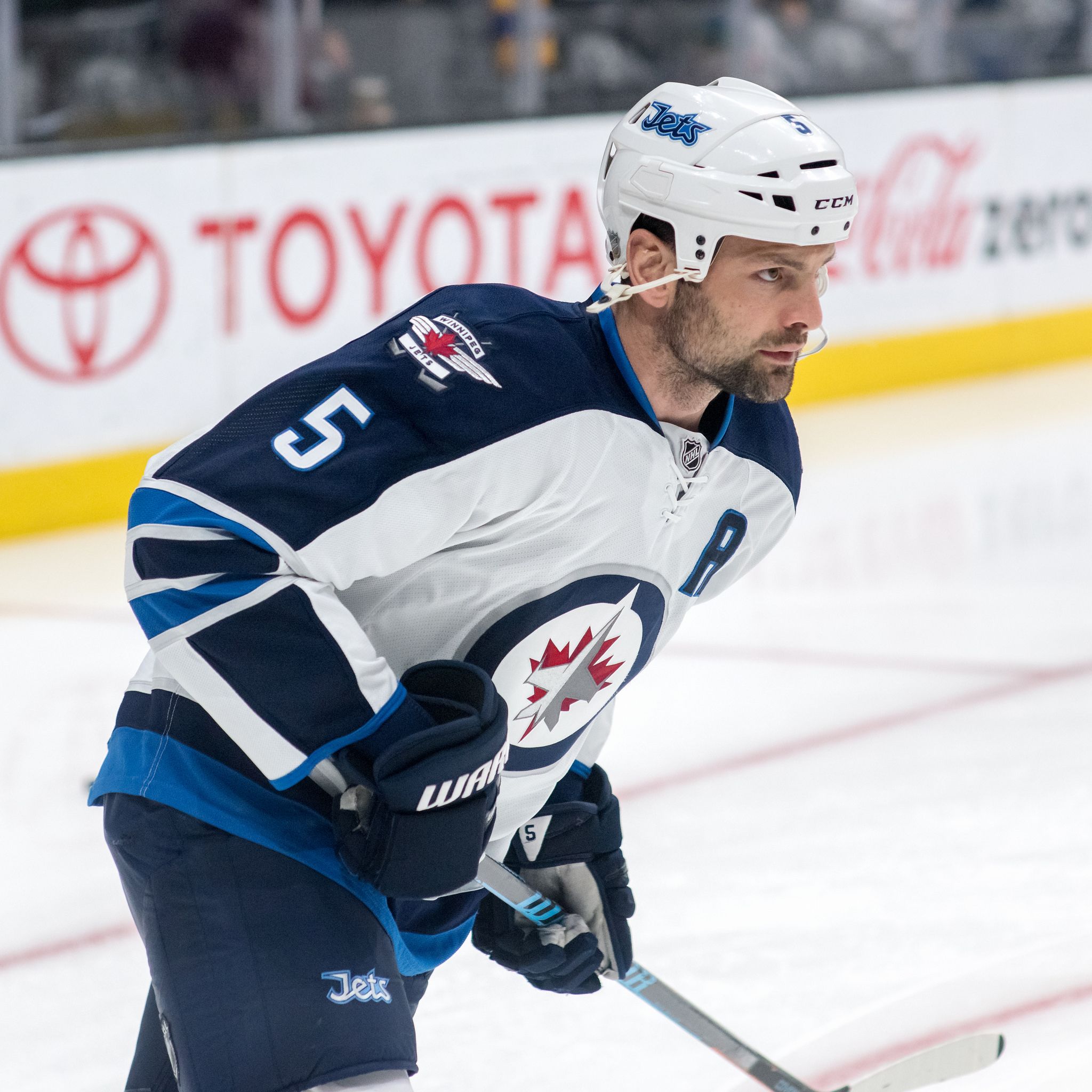
Photo / Flickr Creative Commons
Photo / Flickr Creative Commons
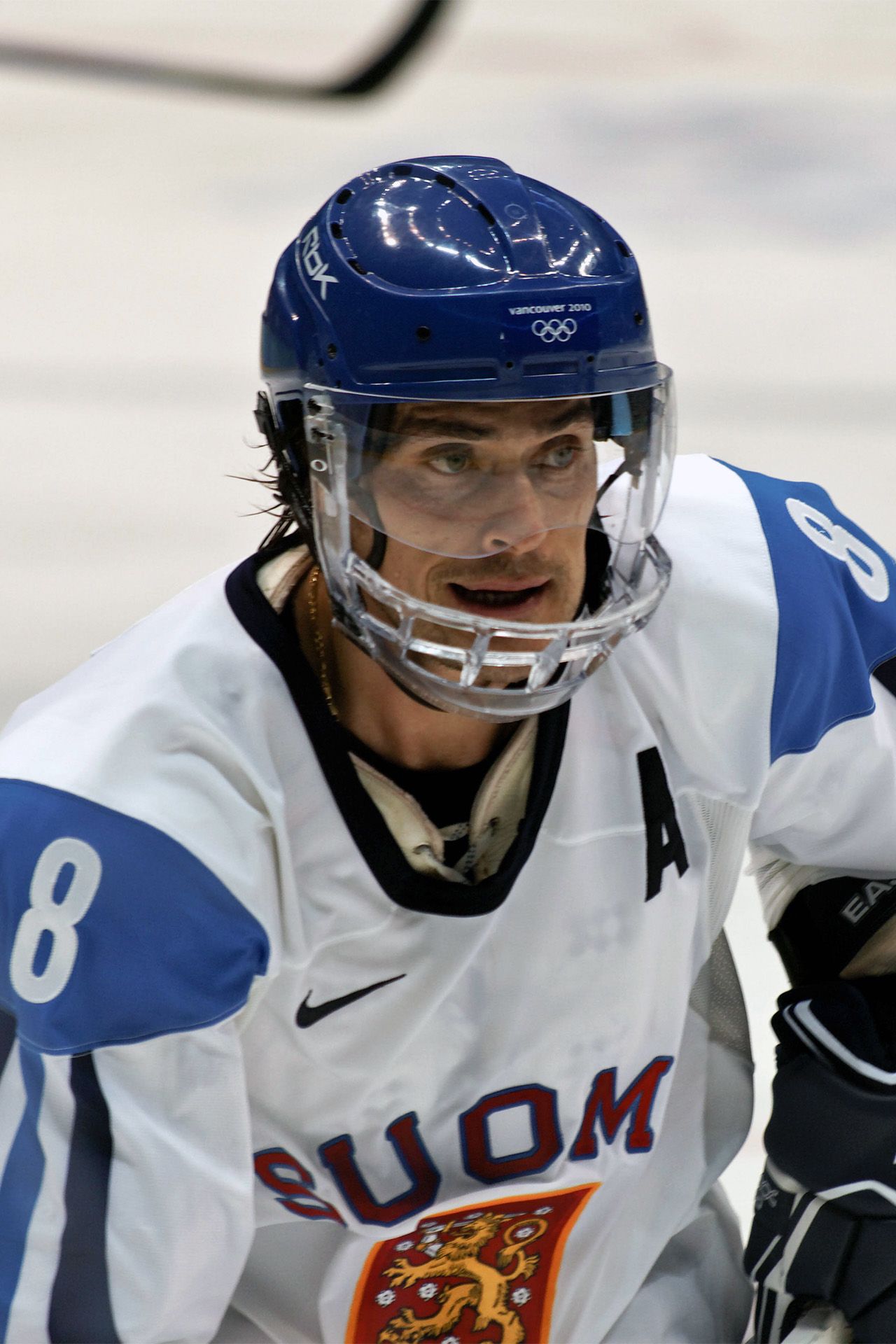
Photo / Wikimedia Commons
Photo / Wikimedia Commons
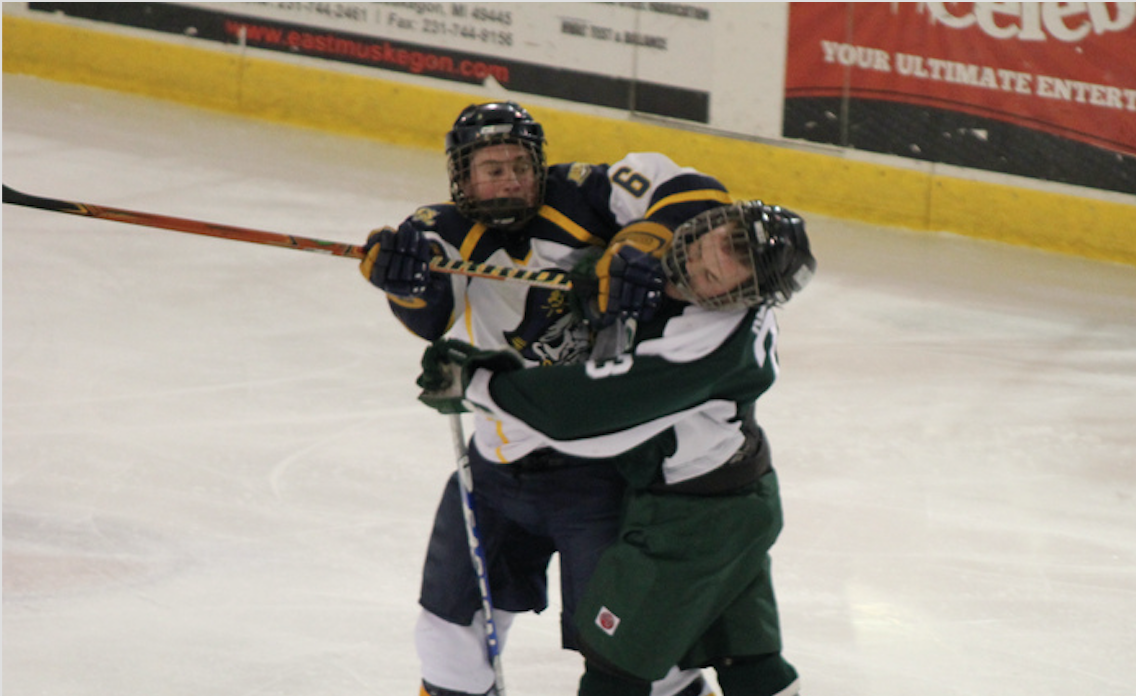
The debate over facial protection seems simple at first glance. The more protection a player wears, the less likely his face will be injured in play.
However, an important aspect that is much overlooked within the typical debate is through the gladiator effect.
The term comes from the theory that the more protection a player wears, the more invincible he feels on the ice, like a gladiator in full armor. With a full cage on, players are more prone to act recklessly on the ice, whether it’s in the form of high-sticking or overly-aggressive use of body checking.
Karlis Cukste, another Quinnipiac defenseman and an NHL draft pick of the San Jose Sharks, originally hadn’t heard of the gladiator effect before. But once it was brought to his attention, it simply made sense based on his own experiences.
“It's actually interesting. The first year I went to Sharks camp from wearing a full cage, I would catch myself going hard in the corners, lifting my stick up and [other players] would be like, ‘What are you doing? You almost hit me,’” Cukste said. “So the difference between the actual play is different.”
He isn’t the only one to recognize the phenomenon from a reckless-stick standpoint either.
Both Bellows and Priskie were immediately keen on the invincibility factor, even before it was brought up in conversation.
“I think the biggest [reason] for wearing a visor in college is (to have) more stick control,” Bellows added. “I think when you play with guys from juniors or guys that played pro, they have way more stick control between less high-sticks and playing with the body, rather than going for a hook or slash.”
Priskie concurred: “You definitely see less erratic stick play when you’re wearing the visor. Guys are more under control and there aren’t as many high hits or high-sticks like there are in college hockey because in college hockey, when someone high-sticks someone they get it in the face mask and it’s no big deal. But in pro hockey when you draw blood it’s a four-minute penalty."
“It’s just a much more controlled game in the aspect of, there aren’t sticks flying everywhere and guys aren’t invincible as I would put it. Anyone is tough with a cage on, so I think that’s the biggest thing for me.”
Boston Bruins defenseman and former captain at the University of Vermont, Kevan Miller, agrees with the claim as well.
“I believe the gladiator effect is definitely a real thing,” Miller said. “Wearing a cage makes you feel more protected than a visor, consequently, players put their head and face in positions they would otherwise avoid. This is true when giving and receiving hits, blocking shots, and in scrums after the whistle.”
Despite the firsthand experience from some players, Dr. Stuart is adamant that the gladiator effect is not 100 percent true from the scientific perspective.
“First of all, I agree with the gladiator mentality. You have to be careful about adding too much equipment because the concern would be that players that have false sense of security, reckless abandon and use their head as a weapon,” Dr. Stuart added. “... But the reality is that there is zero — zero — scientific evidence to prove that facial protection increases a risk of concussions or cervical spine injuries. Now it doesn’t mean it doesn’t increase the risk, but there is zero evidence to say that.”
If the injuries are virtually imminent, why does the NCAA stay on course with the mandated full face mask rule?
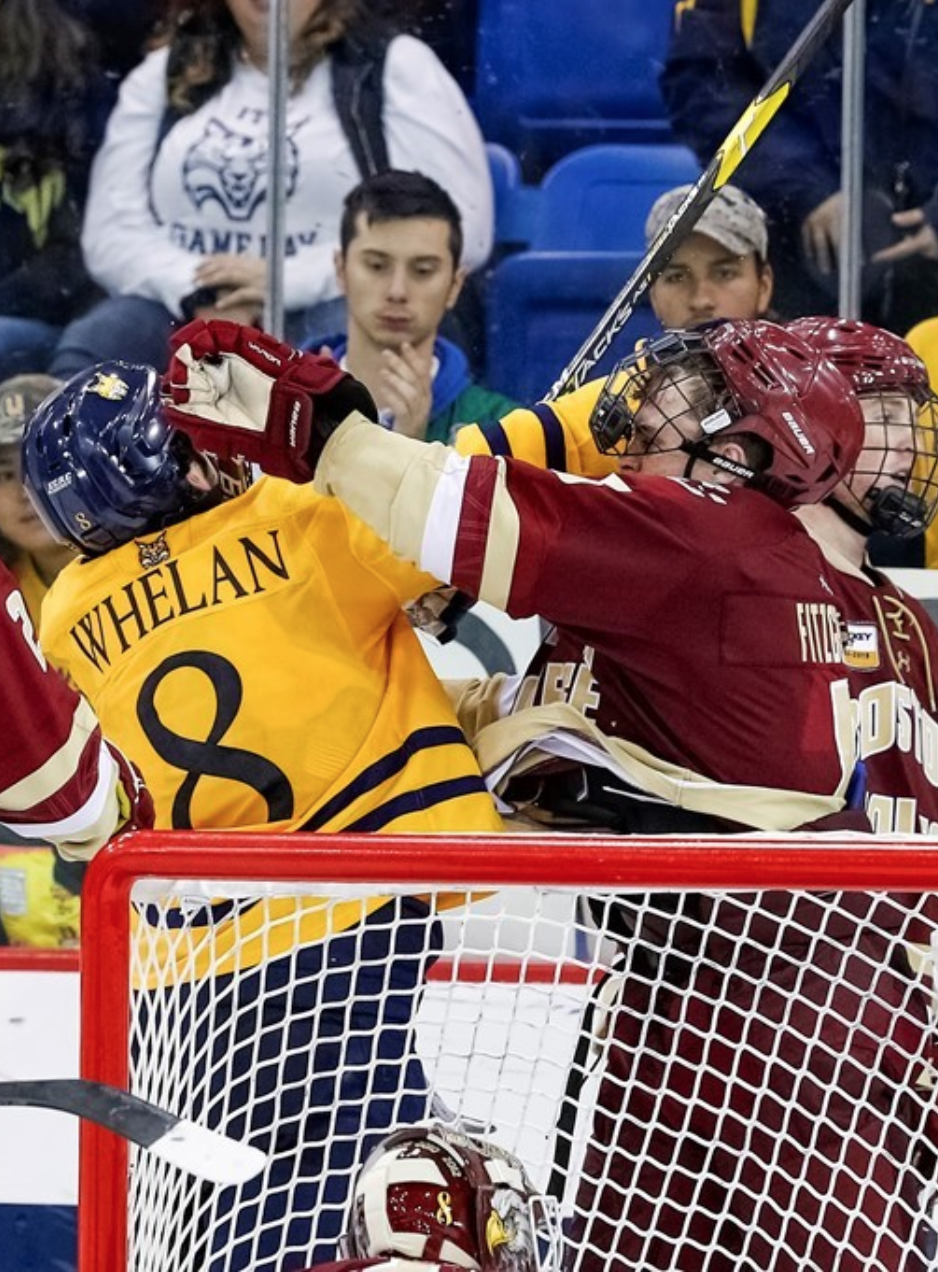
Photo / Rob Rasmussen
Photo / Rob Rasmussen

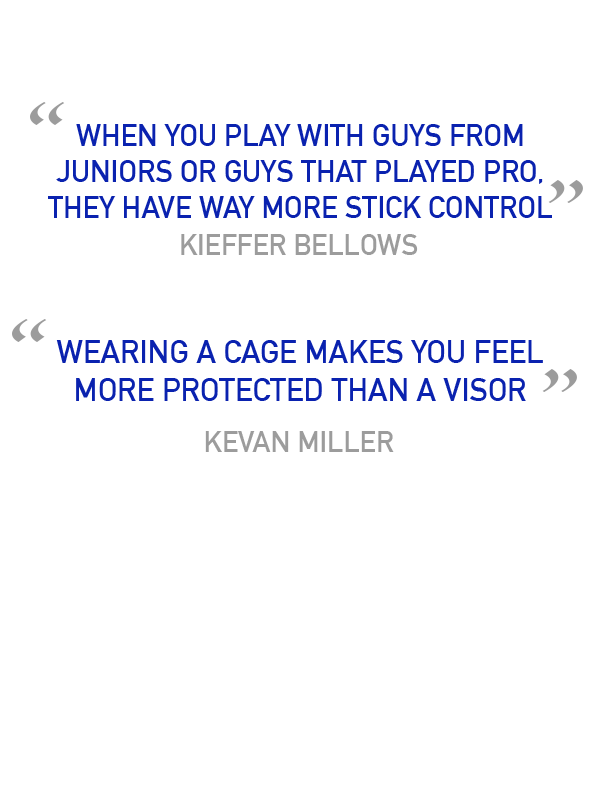

Dr. Stuart believes that in order for college hockey to incorporate visors, there are five major points that need to be solidified, including proper helmet design, adequate visor size and uniformed consistency among helmets throughout the league.
At an American Hockey Coaches Association convention in June of 2012, switching from the full cage to a visor was one one of four integral proposals.
While both coaches and players are widely believed to be on on board with the proposal, there are administrative reasons as to why the change hasn't happened yet, and potentially may not happen at all.
At its core, sport is a business. Even at the collegiate level.
Among all NCAA sports, men's ice hockey rakes in over $2 million as a a top 3 revenue stream, according to Business Insider.

Graphic / Mike Nudelman
Graphic / Mike Nudelman
And while protecting student-athletes from potential external injuries is a reason to keep the full face mask implemented, there is a business aspect as well.
"I think they’re just afraid of seeing bad injuries on their campuses"
The realization of imminent litigation and liability claims is what is ultimately stopping the switch from occurring, Riga noted.
“In a sense, it is [the financial aspect], but it’s more a liability aspect. It goes from the coaches and then the [athletic directors], to the lawyers and presidents of colleges, and they don’t want liability,” Riga said. “So I personally don’t think they’re ever going to do it. If it would have been done it could have been done because all the players wanted it and most of the athletic directors wanted it, and then it came down to:
‘Well if a kid gets cut in the face and there’s blood all over the ice, is that bad for business? If a kid loses an eye is that bad for business? Who pays for that?’ I think they’re just afraid of seeing bad injuries on their campuses, or to their student-athletes, and they just say, ‘Well, if we just keep the masks on you don’t lose an eye.’”
It’s not just administrative figures that see the big picture in keeping full face shields at the collegiate game either. It's the players as well.
Ethan De Jong, a freshman at Quinnipiac, played his junior hockey in the British Columbia Hockey League (BCHL) as a teenager, and is all-to familiar with the cost of wearing a visor.
“I feel like the big reason is to save money, that’s why the NCAA does it,” De Jong said. “I lost three teeth and it cost like 10 grand ($10 thousand) to get new ones in there, so I really appreciate the cage.”
There are plenty others that have experienced what De Jong went through, and Dr. Stuart has been around the game long enough to be a part of those experiences as well.
“I’ve been taking care of junior teams for 30 years now and I have to tell a parent, ‘Well your son needs $14 thousand worth of dental work.’ And they say, ‘What do you mean?’ And I say, ‘Don’t look at me, he’s wearing a visor and no mouthpiece. It’s not my deal, shit happens.’”
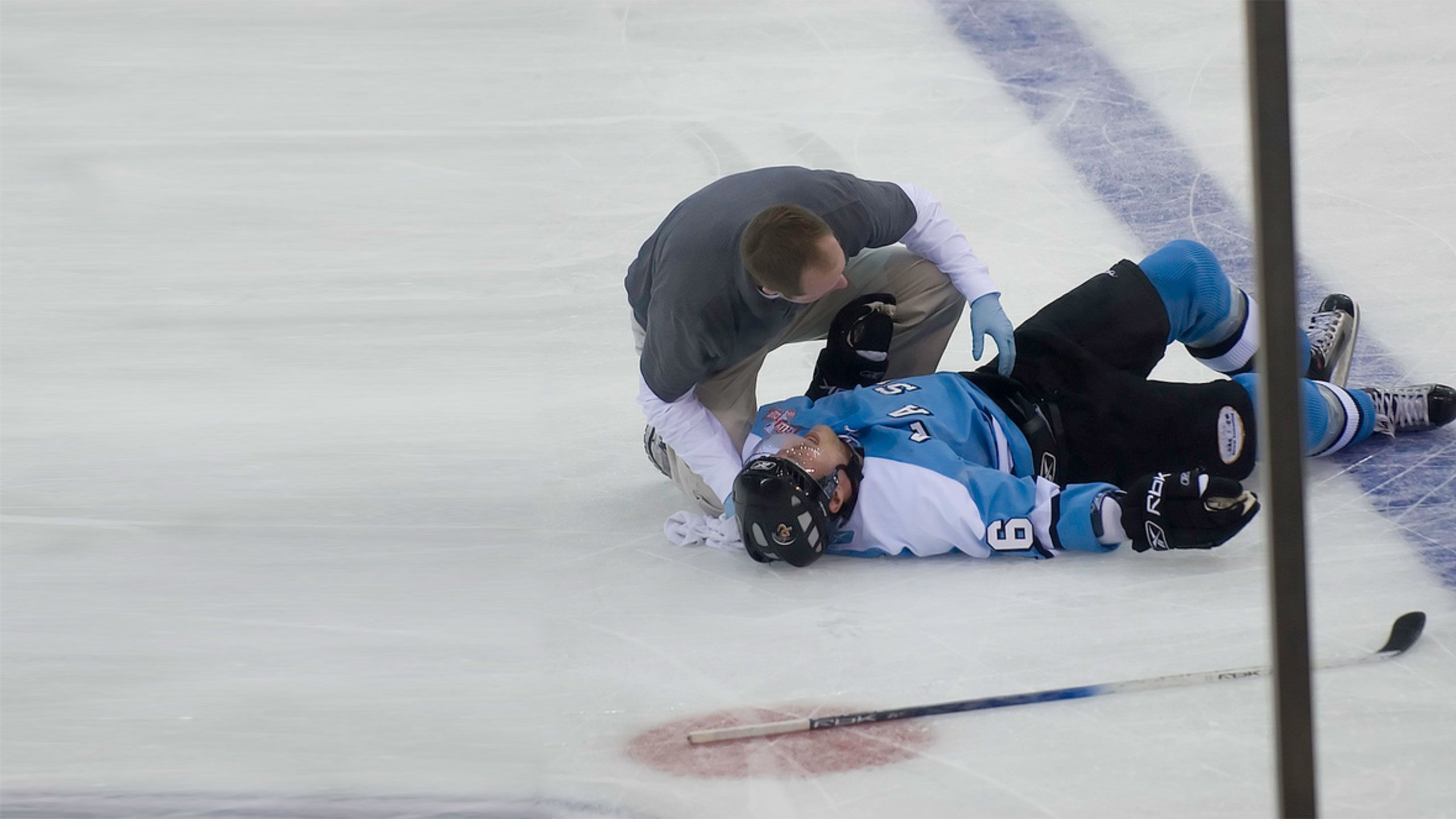
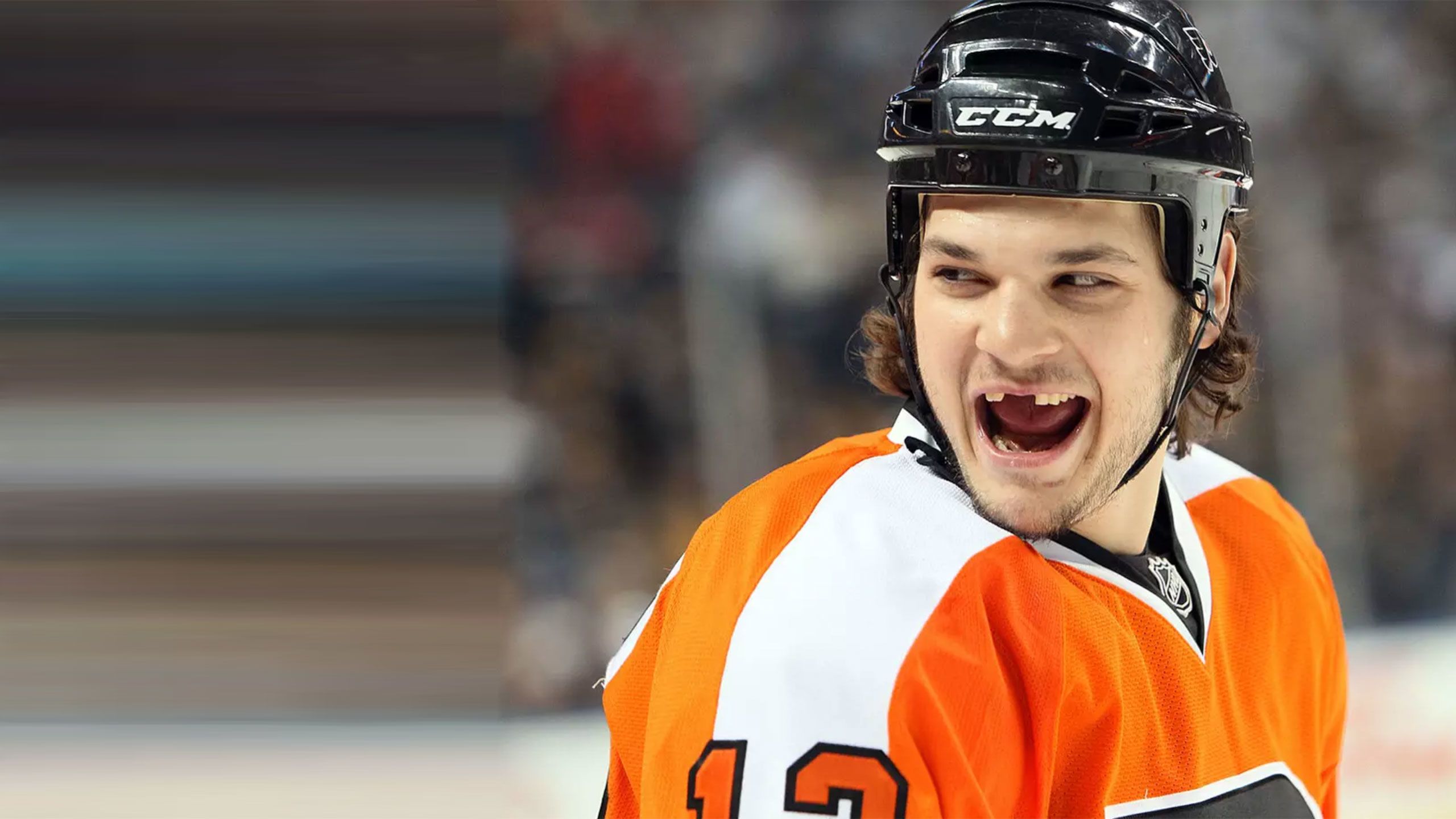
As Priskie completes his collegiate career at Quinnipiac, he will look to go pro following the 2018-19 season. Once there is no more college hockey left to play, Priskie will join the Capitals organization and put on the half shield for good.
Like all college hockey players, he knew the circumstances of wearing a full shield when he made the decision to become a student-athlete.
Further, Priskie believes that getting rid of the full cage may ultimately better promote college hockey due to a more seamless transition into the pro game.
But for better or worse, he is ready to drop the full cage in the next stage of his career.
“Overall, I’m just a big fan of visors and I think it’s more of a personal opinion on the matter,” Priskie added. “I know guys that have worn visors that love it and guys that have worn visors that don’t like it, but moving forward into pro hockey you don’t have a choice.”
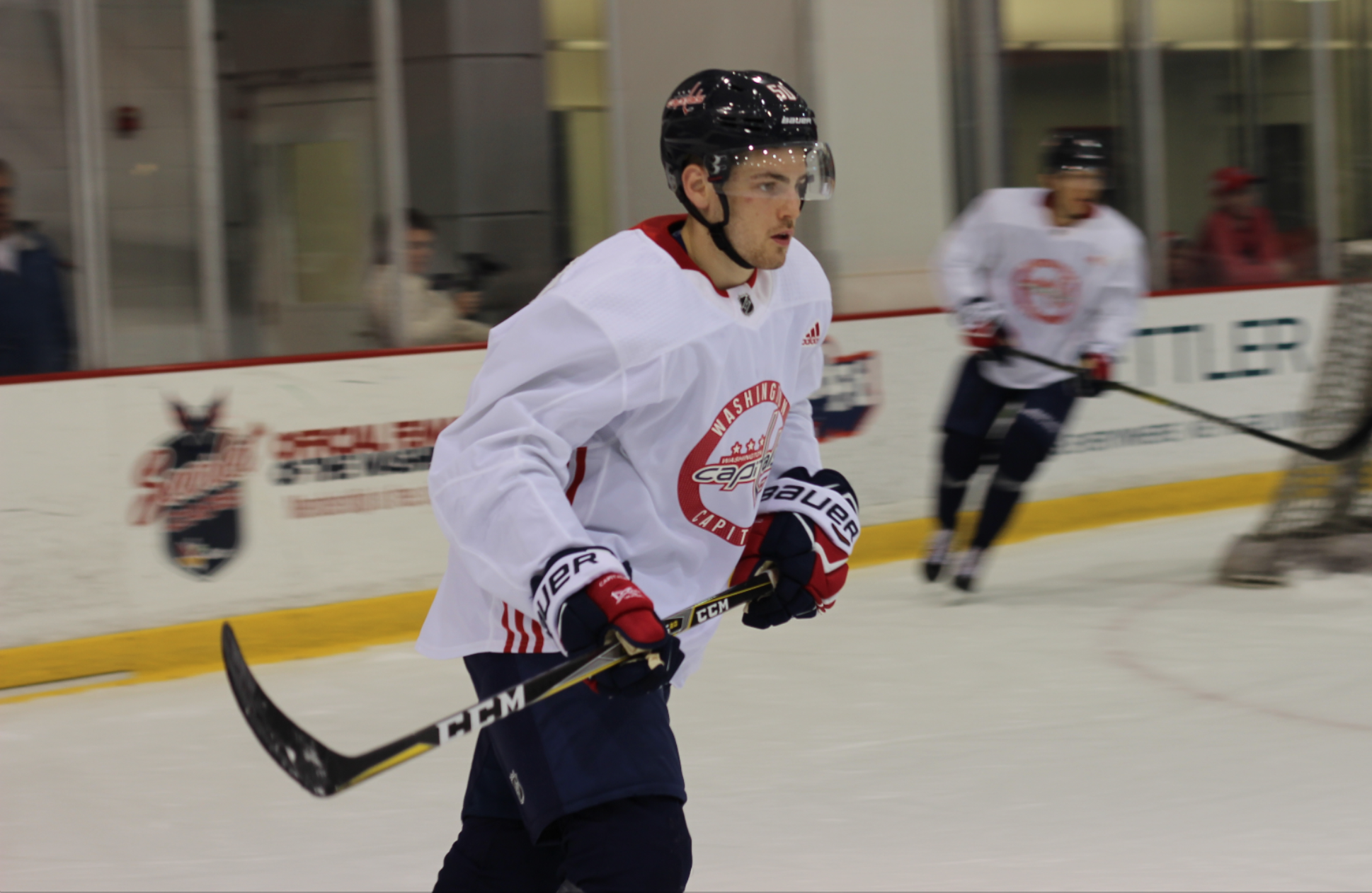
Photo / Scott Putski
Photo / Scott Putski
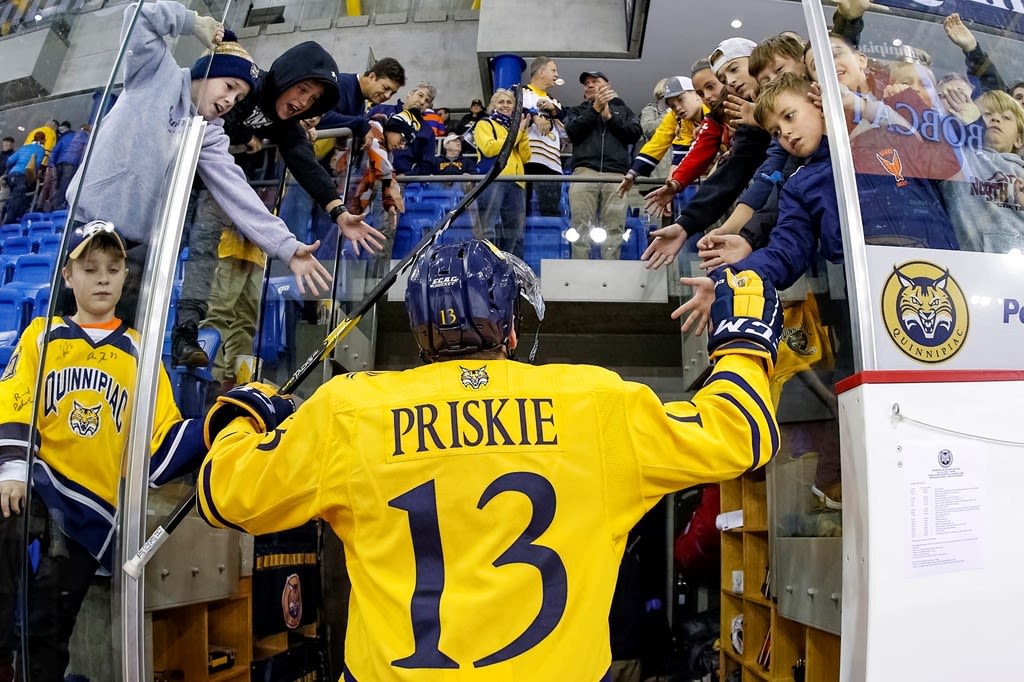
What the players say:
Kevan Miller:
“It was frustrating at the time I was playing college hockey, however, looking back it doesn’t make much sense to me. I can understand why the NCAA mandates it. I believe it is all insurance based and players getting stitches and teeth knocked out can be expensive on insurance costs. On the other hand, players with the gladiator effect are making the sport more dangerous. Concussions are a real issue in today’s sports and a much bigger problem then stitches and missing teeth. Eventually the NCAA will have to address this.”
“I didn’t find it very difficult to transition from cage to visor. You need to protect your face a little more than you would with a cage but that becomes a natural reaction. I think the biggest adjustment was my own stick against players with visors rather then cages.”
“I have been very fortunate to avoid any major facial lacerations. Small cosmetic things here and there, but for the most part, I don’t wish I was wearing a cage at all.”
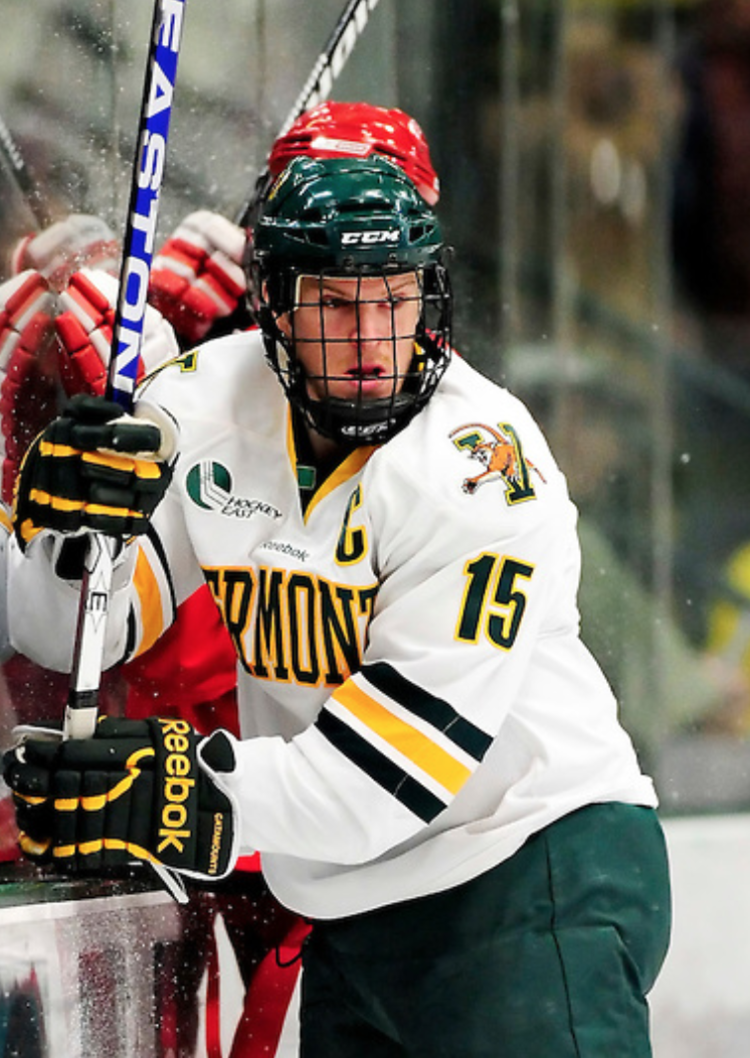
Photo / Ed Wolfstein
Photo / Ed Wolfstein
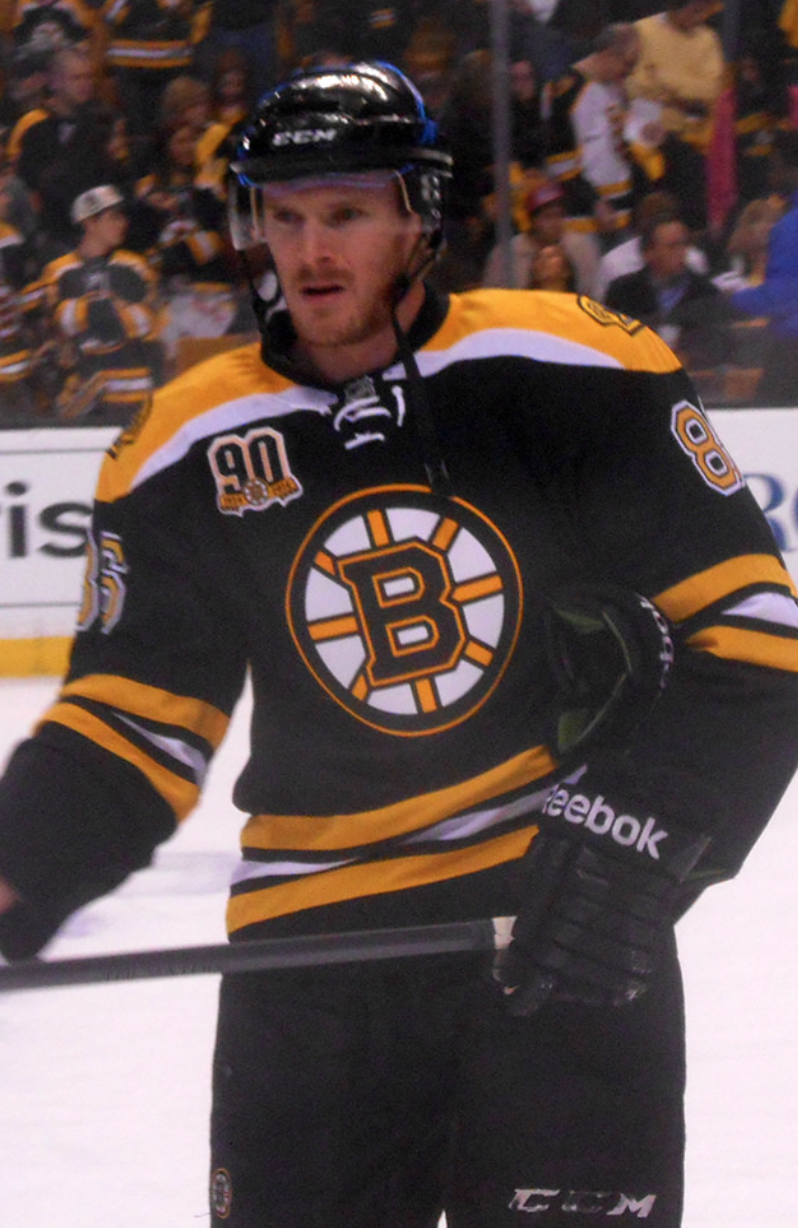
Photo / Flickr Creative Commons
Photo / Flickr Creative Commons
Corban Knight:
“I really don’t think it’s a big issue in today’s game. The transition from college to pro, I don’t think guys really think about going from a cage to a visor. If anything it’s just nice to get into a visor again."
"For me, I’ve lost a couple teeth and had quite a few cuts on the face, but it’s the same thing, you don’t really think about that when you’re playing. Obviously after the fact, when your face is throbbing or you’re icing your face you may wish you had a cage on, but at the same time, it’s not really something where you wish you had the cage on or anything like that.”
"I think maybe [I wish I had a cage] a little bit with blocking shots and stuff. You feel a little more confident that if one gets away from a guy and comes up high, you have your cage to protect you. But at the same time, when you’re on the ice you’re not really thinking about that stuff, you’re just playing hockey. I don’t really think that’s something that I think about or has ever really affected me.”
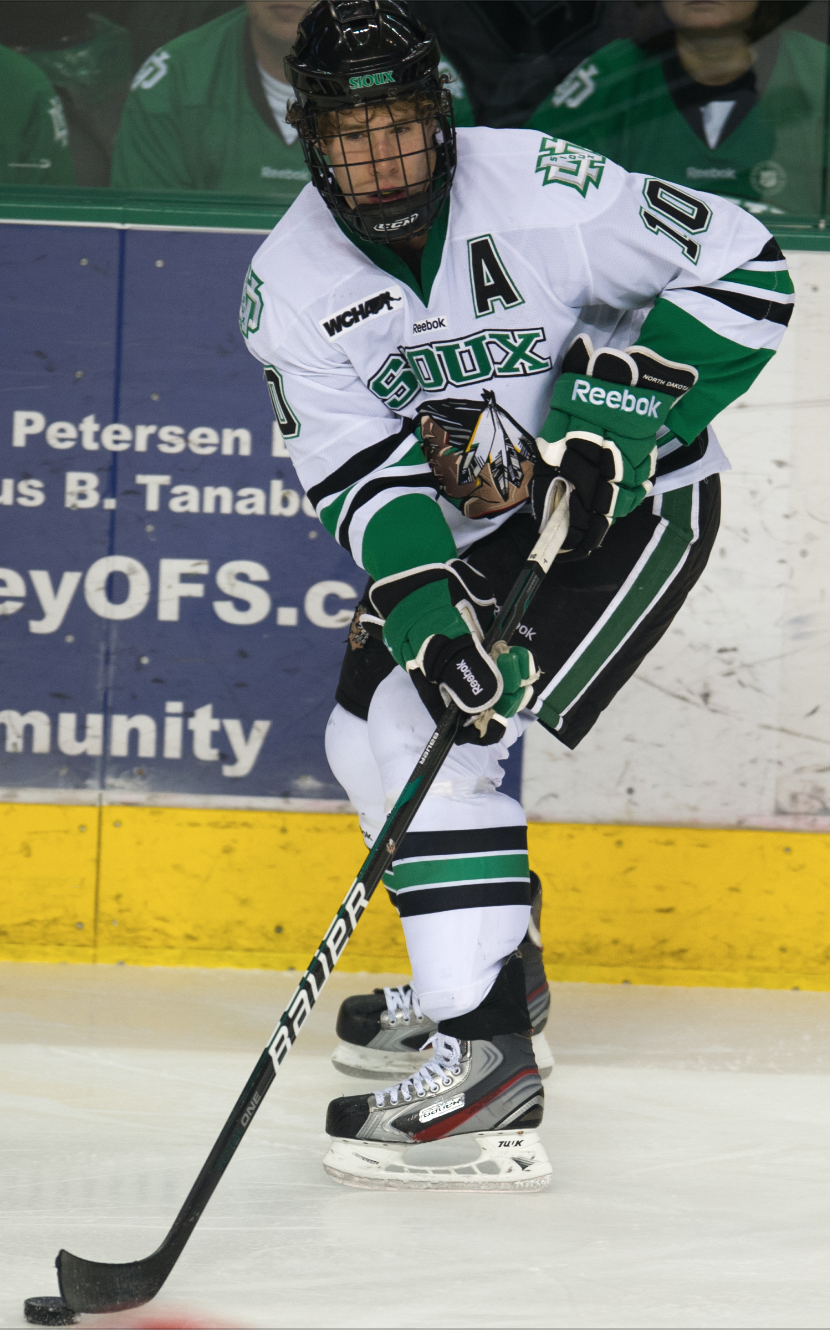
Photo / Eric Classen
Photo / Eric Classen
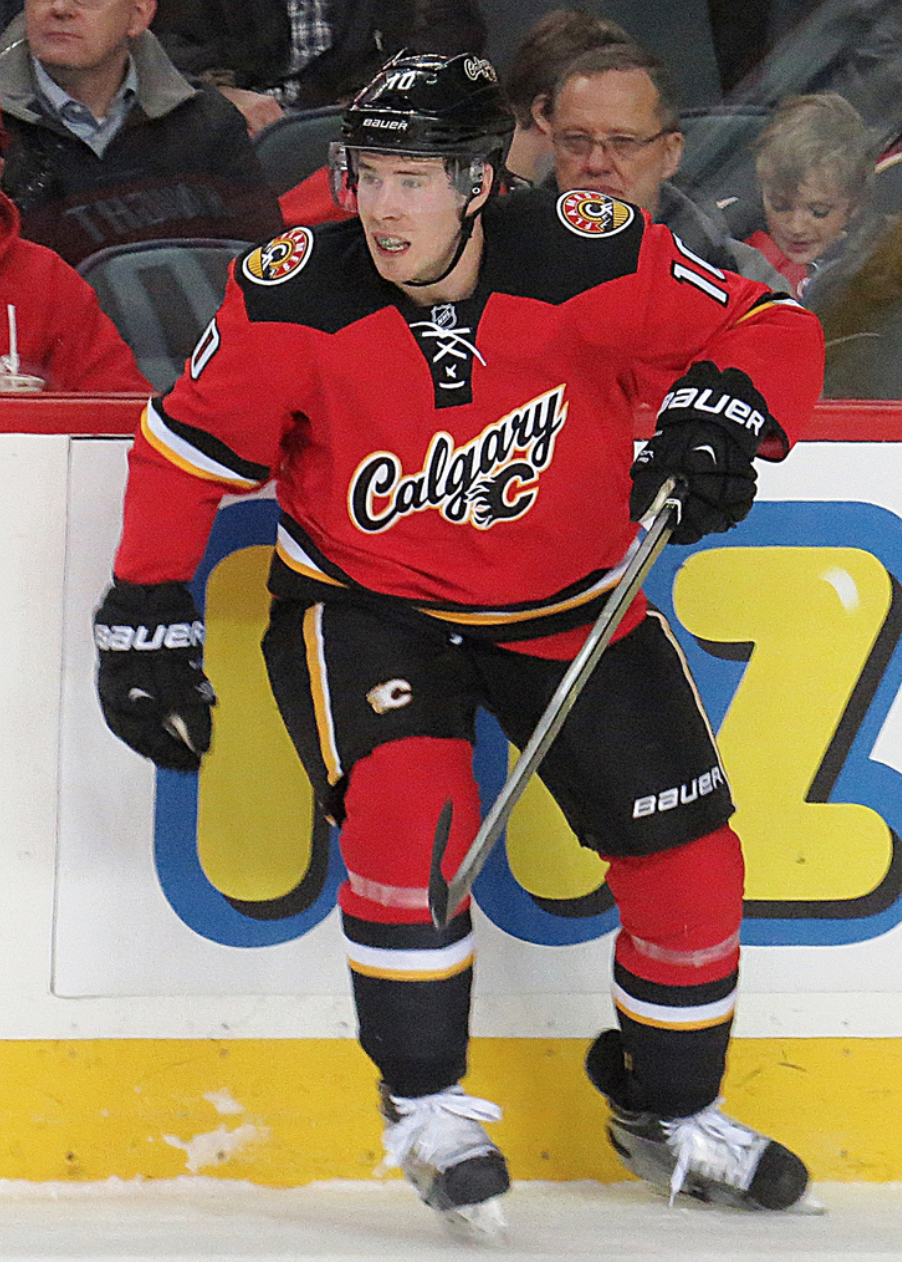
Photo / Wikimedia Commons
Photo / Wikimedia Commons
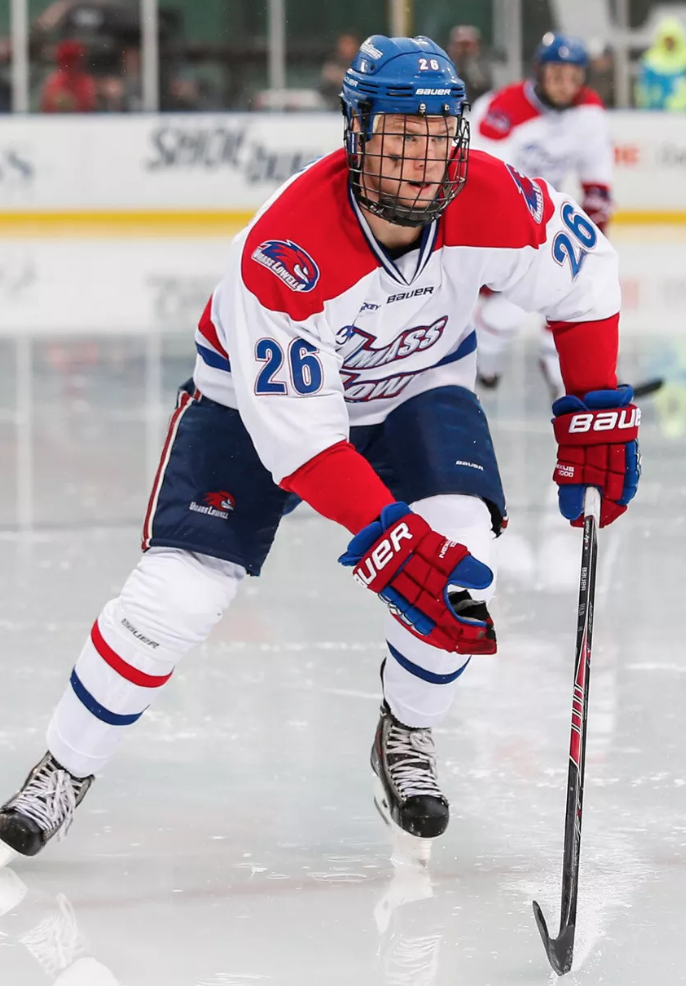
Photo / Matt Dewkett
Photo / Matt Dewkett

Photo / Matthew Stockman
Photo / Matthew Stockman
Christian Folin:
“The college game is reckless, like hands are up high, guys are following through with everything. First there’s a hit, but then you also follow through with your hands and even sticks sometimes, so that (gladiator) effect definitely has a play.”
“It definitely brings a little more ruthlessness to the game. Guys are not cautious. They come in high and really hard, so I think if you take that away, guys are gonna understand that it hurts getting hit in the face without a cage on.”
“You just accept [wearing a cage]. It wasn’t like, ‘Oh, I’ve got to play with a cage,’ it was just something that they do."
"I wish [the NCAA] wouldn’t (wear cages). And then it would be better for the players to translate into the NHL-level because now it’s a little bit [of] a transition with the gladiator effect, like they call it, it’s pretty funny.”
Chase Priskie:
"Guys that played in junior leagues that wear visors, they seem to know how to control their stick and it just seems like when you go to those camps you’re only playing against like 30 guys, and they're all — I would classify them as — elite players, so they have control with their stick anyways. But you definitely see more from college players that they’ve got higher high sticks than you do with major junior players who wear half shields all the time."
“I just think it kind of develops bad habits with guys running around with their stick in the air. First of all, you can draw penalties and secondly, if you don’t have your stick on the ice there’s no way to collect the puck. So I just think it kind of develops a bad habit in general.”
"It is what it is and hopefully we’ll see in years to come that they can acclimate well enough dental plans that we can institute visors and I think that a lot of it is, once you put visors into place, you’ll see a lot less high-sticking penalties and hit to the heads just because you’ve got to play a more controlled game."
"In my opinion, I think that the college game models the pro game so well in terms of speed and size and strength that the sooner they get into wearing visors it just promotes college hockey that much more in the aspect of it’s more of a seamless transition because you don’t have to wear a visor and that’s part of the sell, where a lot of major junior teams can sell that we’re going to better prepare you because you will be playing in a visor and it’ll be more comfortable in that aspect."
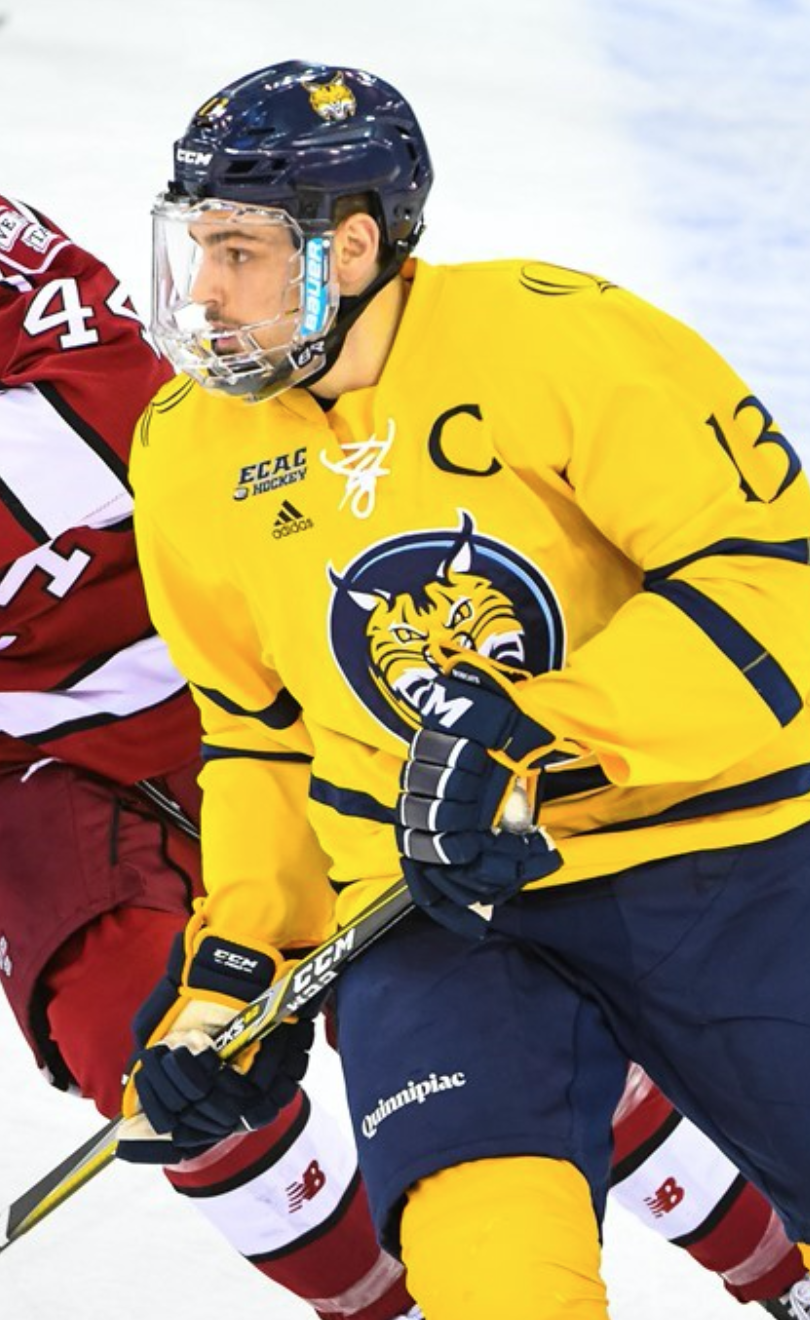
Photo / Rob Rasmussen
Photo / Rob Rasmussen

Photo / Scott Putski
Photo / Scott Putski
Ethan De Jong:
“Another reason why I like the cage is — I’m not really a fighter anyways — but I can get in dirty, throw a few cross checks and they can’t really do anything about it, so that’s definitely a plus side there and you can definitely be a little more free with your stick out there.”
“The visor is obviously easier to see out of, but I like the cage more. I think it’s better style too.”

Photo / Rob Rasmussen
Photo / Rob Rasmussen
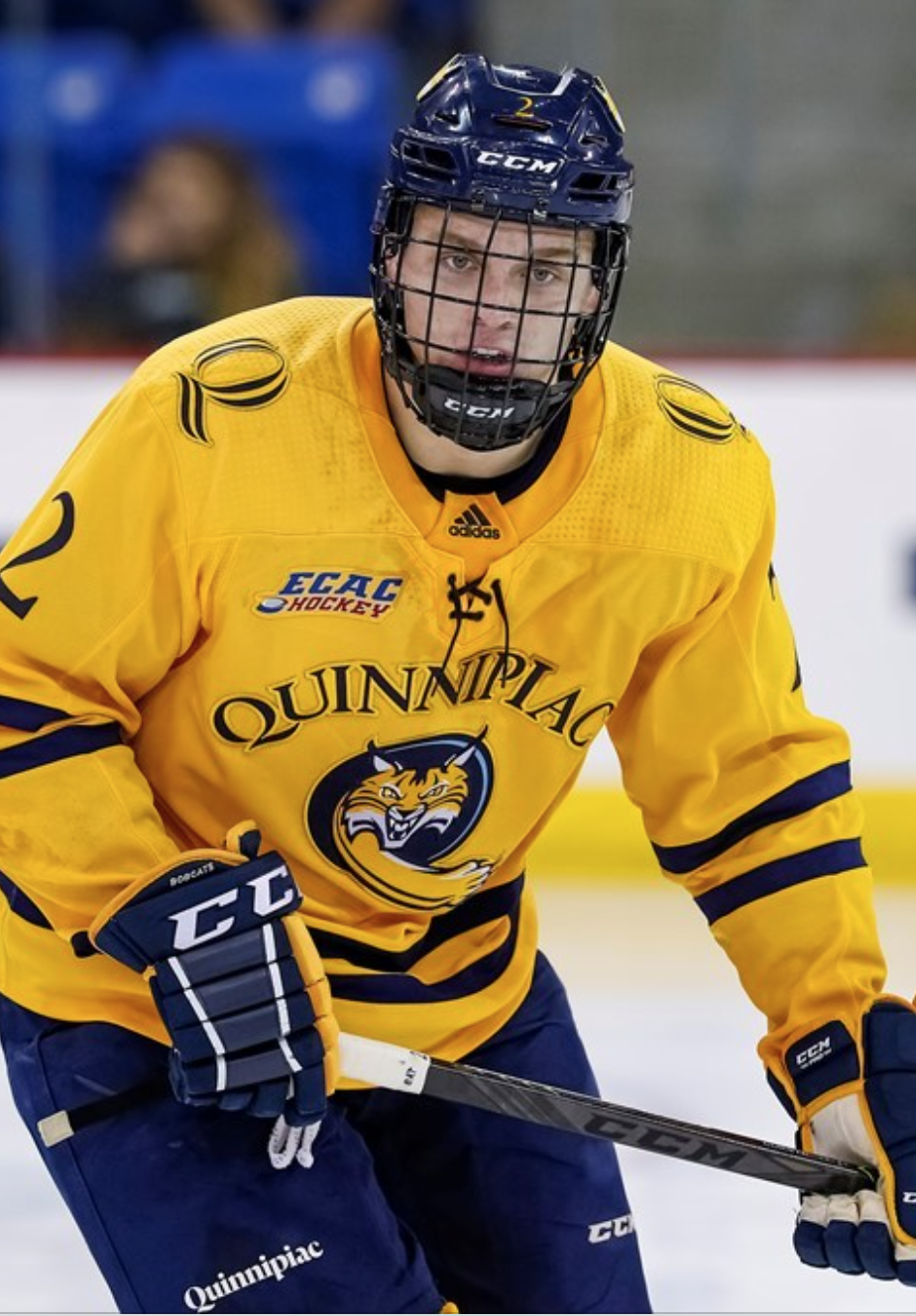
Photo / Rob Rasmussen
Photo / Rob Rasmussen
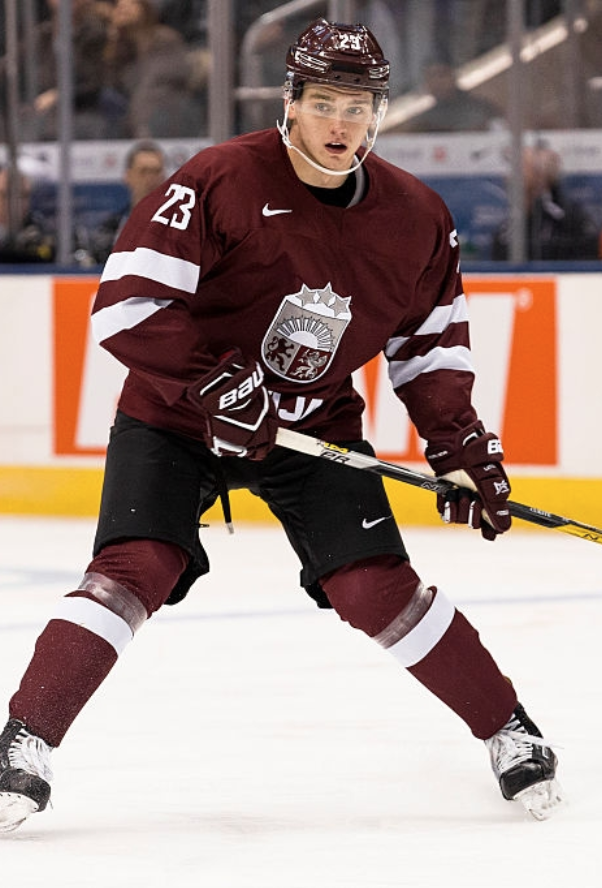
Photo / Adam Pulicicchio
Photo / Adam Pulicicchio
Karlis Cukste:
“There is a difference, but there’s not a big enough difference that it changes the way I play. Yeah, it’s obviously different, like if you go down to block a shot in front of the net you put your hand up so your teeth don’t get knocked out, but you still do it. Vision is better obviously, but it doesn't really make a difference in the way I play.”
“Again, in college you wear the full shield and somebody hits you with the stick, you don’t get mad. But the style of play is different. It’s more like polite, it’s more like an etiquette thing where you don’t really get hit as many times, so it is a little different, but I like how you have to wear a full cage because then you can get better in certain areas of the game that you probably couldn't be to forward and do them in a pro hockey setting.”
“I would not wear a visor, just so I could work on my shot blocking and all those things. I think player safety is more important than looks. Obviously it looks better to wear a half shield, but I don’t think I’d wear it if I didn't have to.”
Kieffer Bellows:
“I just think every high-end league in the world has them and the NCAA should be wearing visors.”
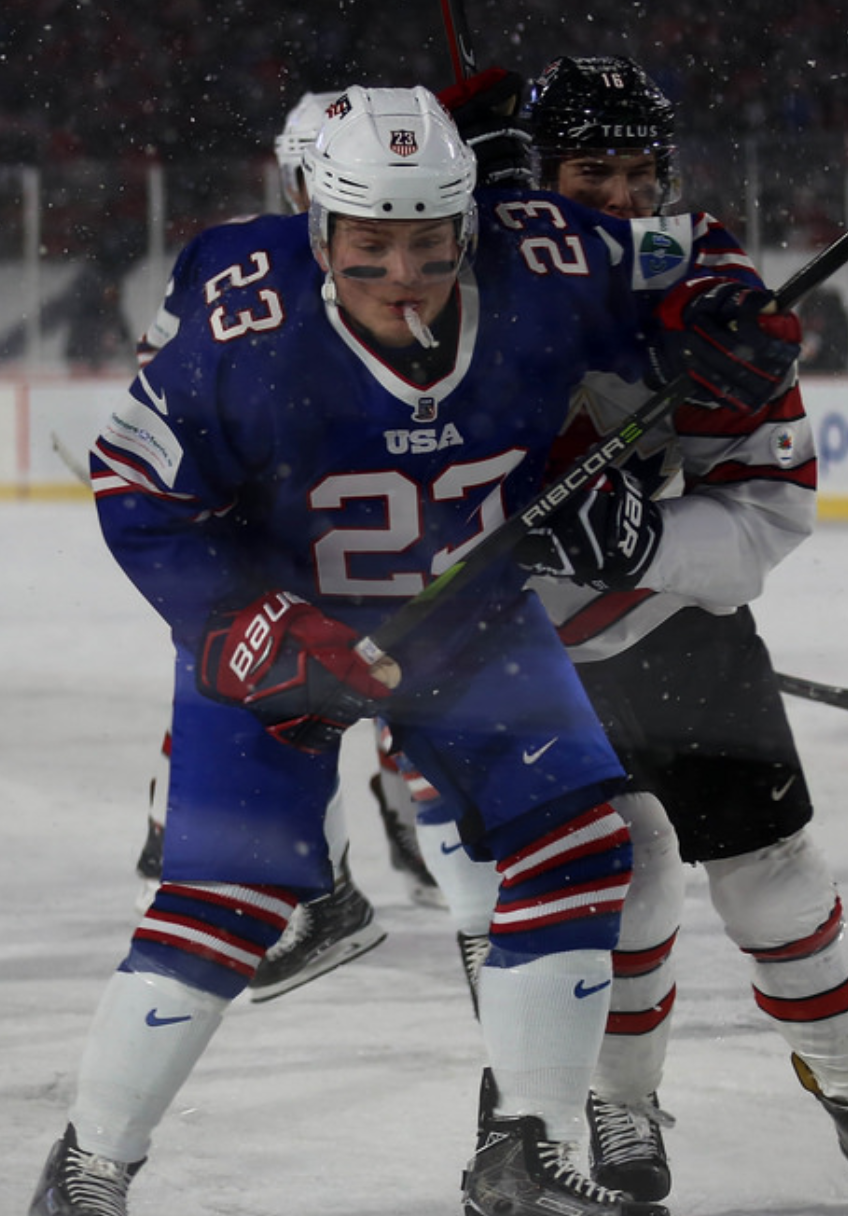
Photo / Anders Marshall
Photo / Anders Marshall
Photo credits in order of appearance:
Rob Rasmussen, Rob Rasmussen, Scott Putski, Flickr Creative Commons, Flickr Creative Commons, Wikimedia Commons, Scott Putski, Yale University Athletics, Pennsylvania State University Athletics, John Mendoza, Rob Rasmussen, Rob Rasmussen, Scott Putski, Matt Dewkett, Matthew Stockman, Boston University, Wikimedia Commons, Rob Rasmussen, Flickr Creative Commons, Wikimedia Commons, Flickr Creative Commons, Rob Rasmussen, Jerome Davis, Flickr Creative Commons, Garrett James, Rob Rasmussen, Scott Putski, Rob Rasmussen, Ed Wolfstein, Flickr Creative Commons, Eric Classen, Wikimedia Commons, Matt Dewkett, Matthew Stockman, Rob Rasmussen, Scott Putski, Rob Rasmussen, Rob Rasmussen, Adam Pulicicchio, Anders Marshall


